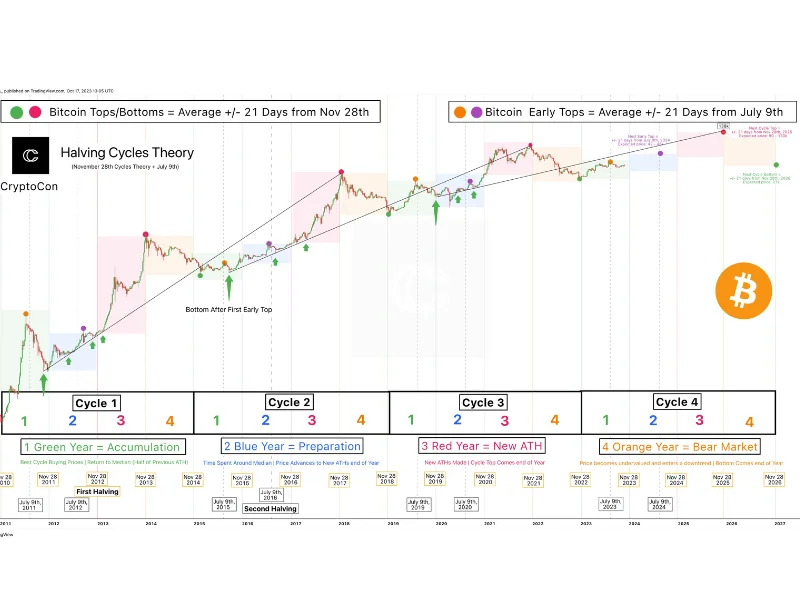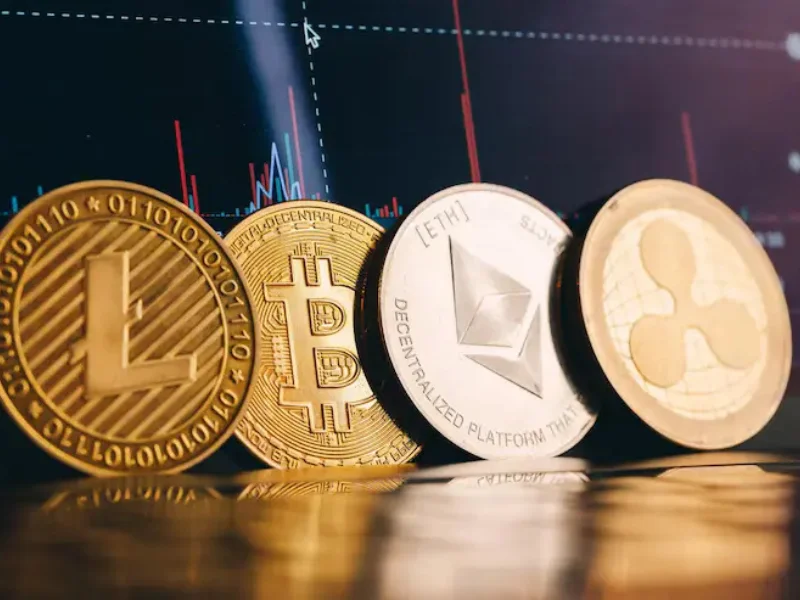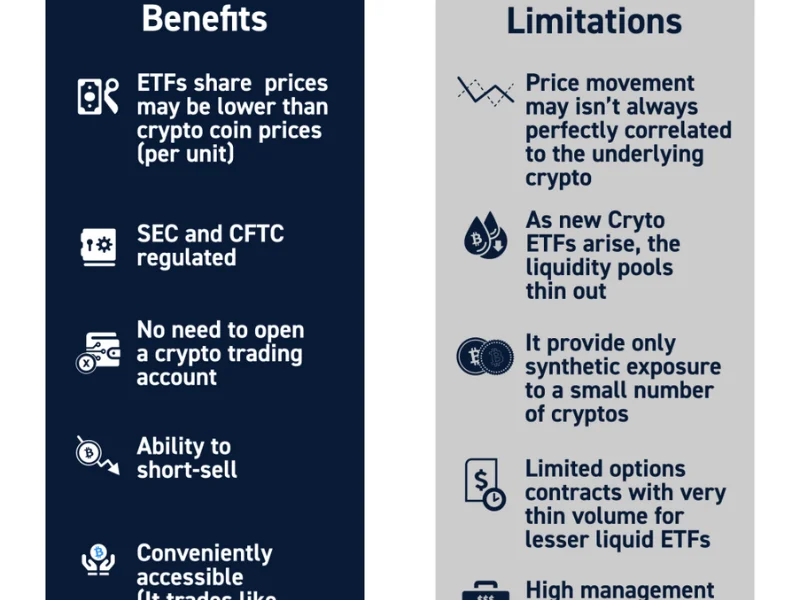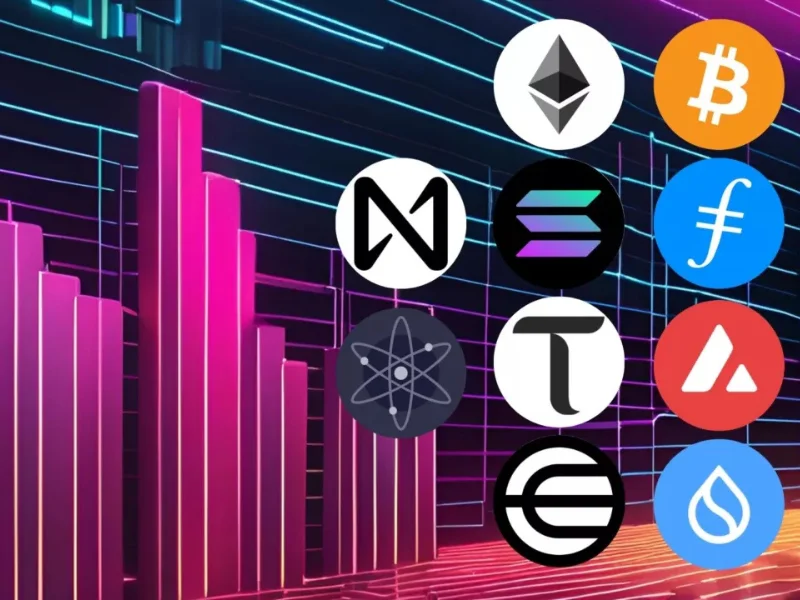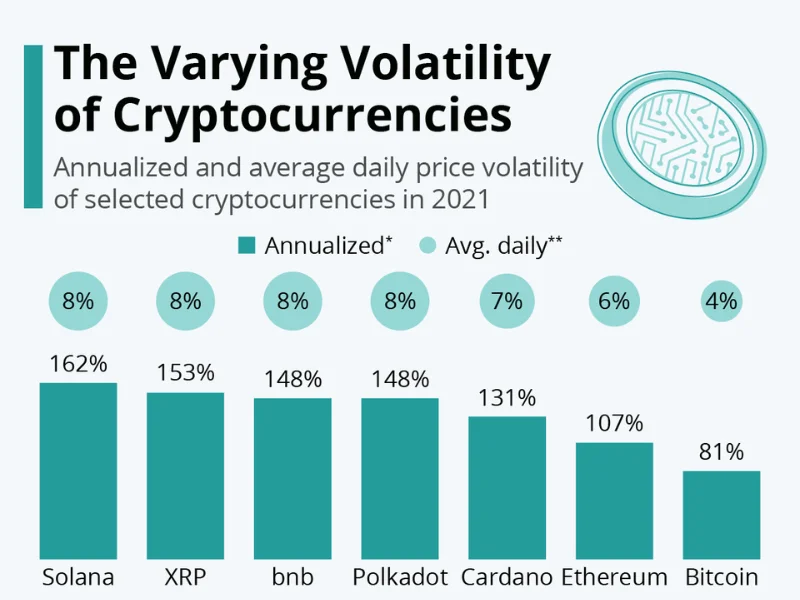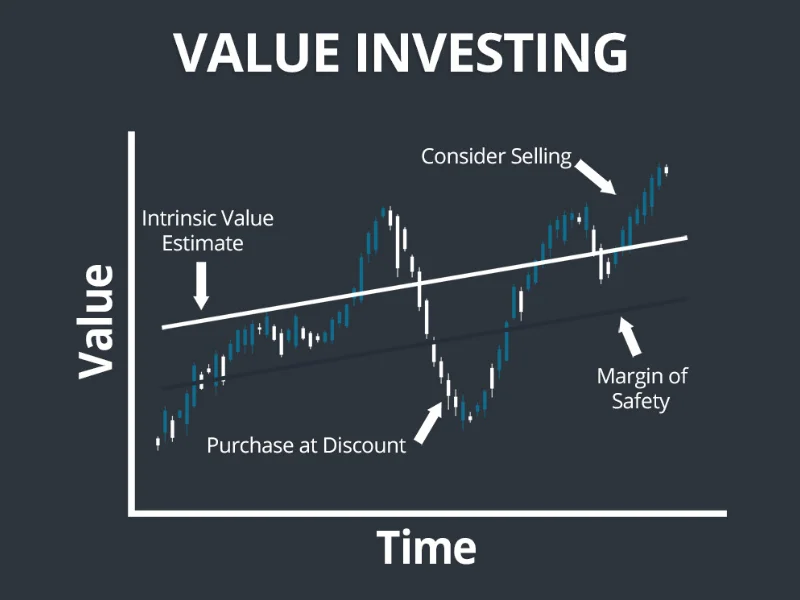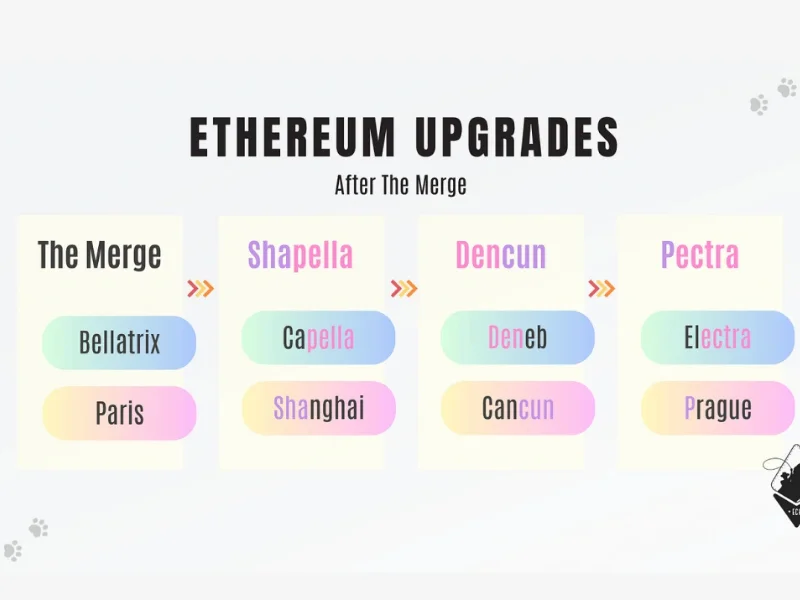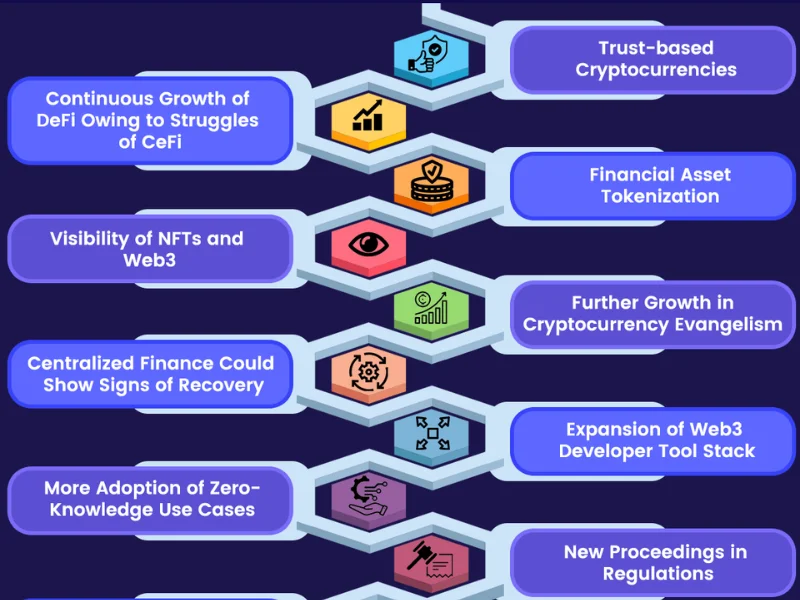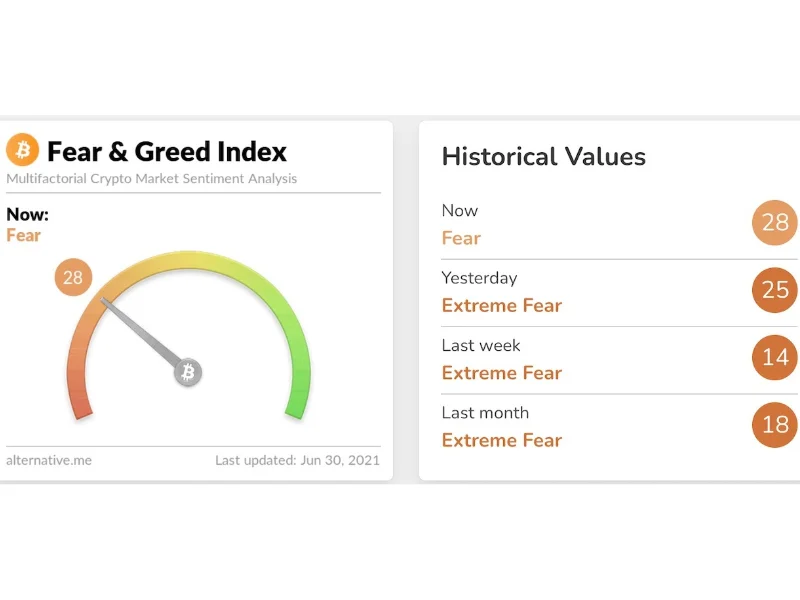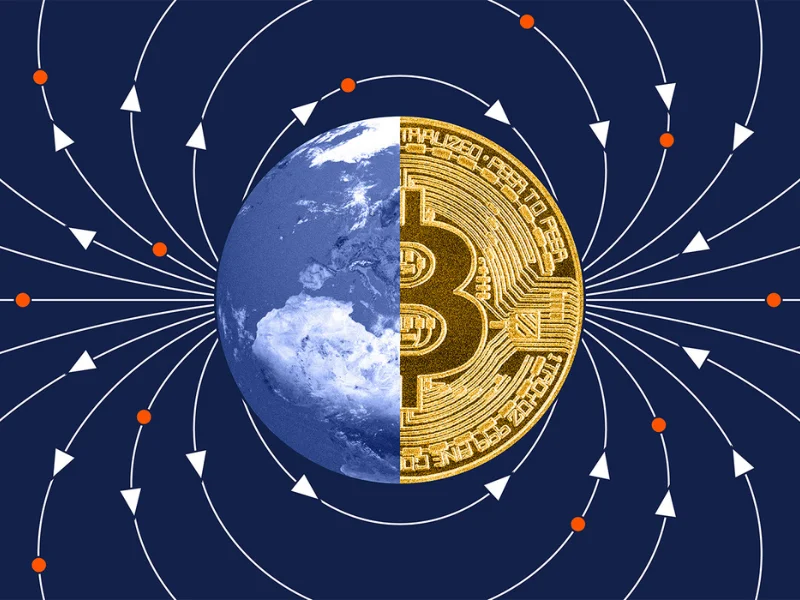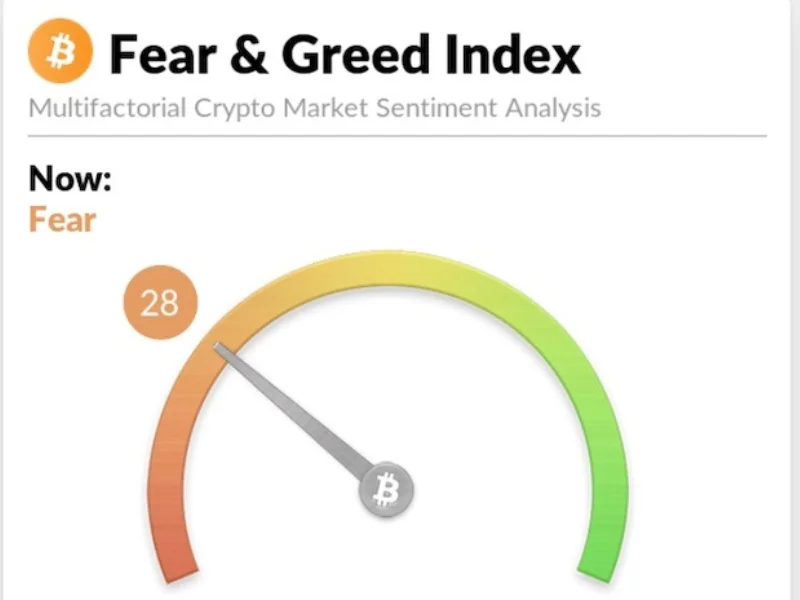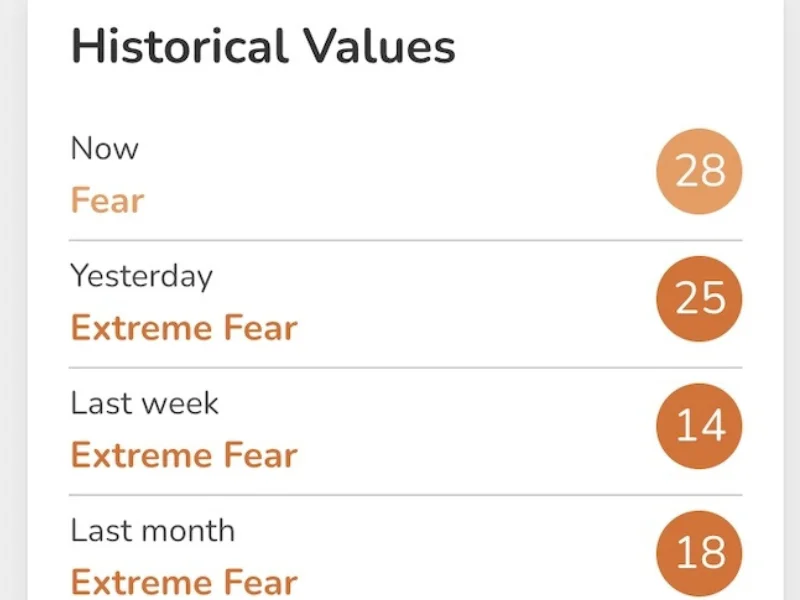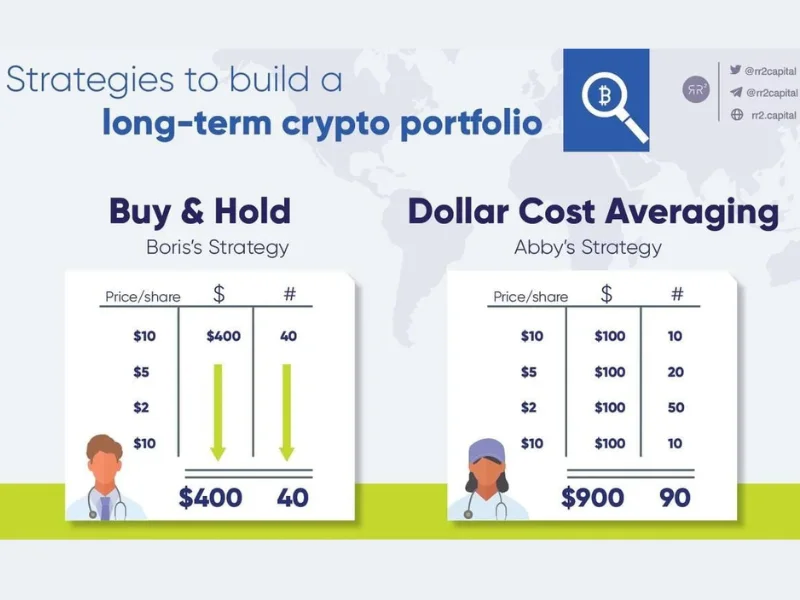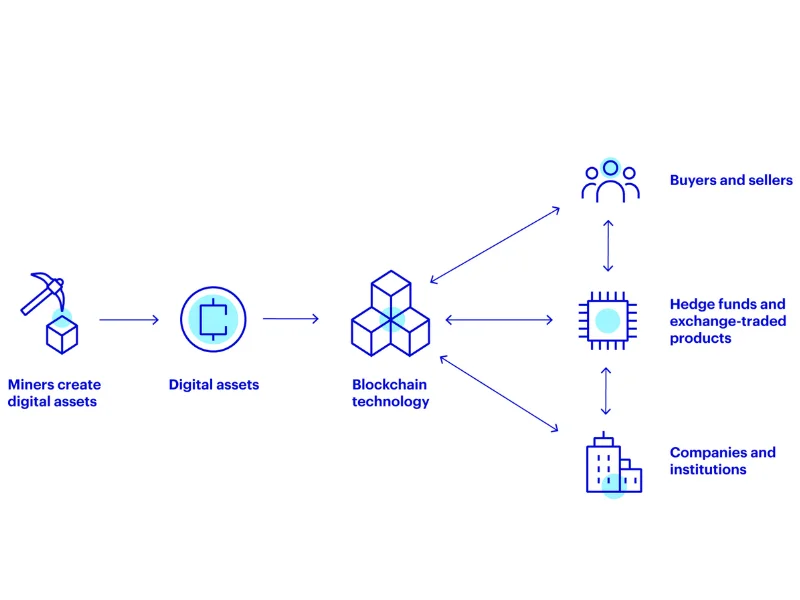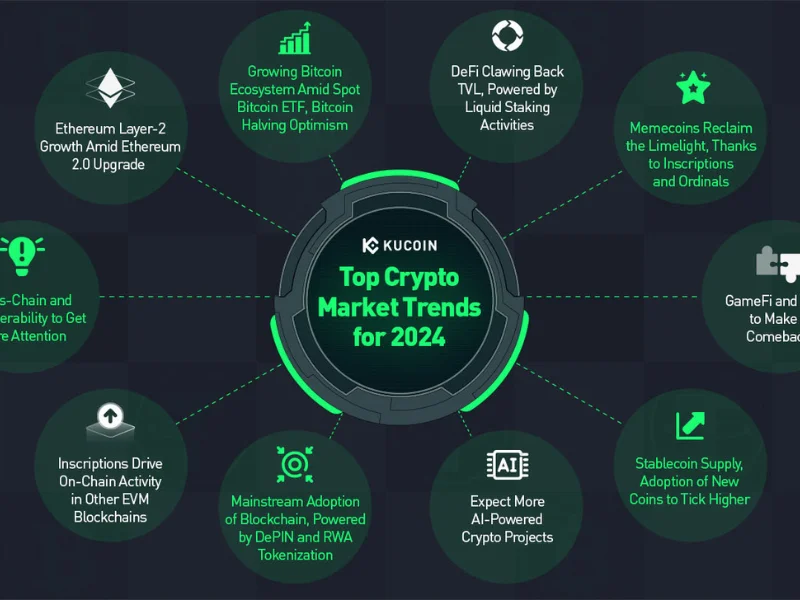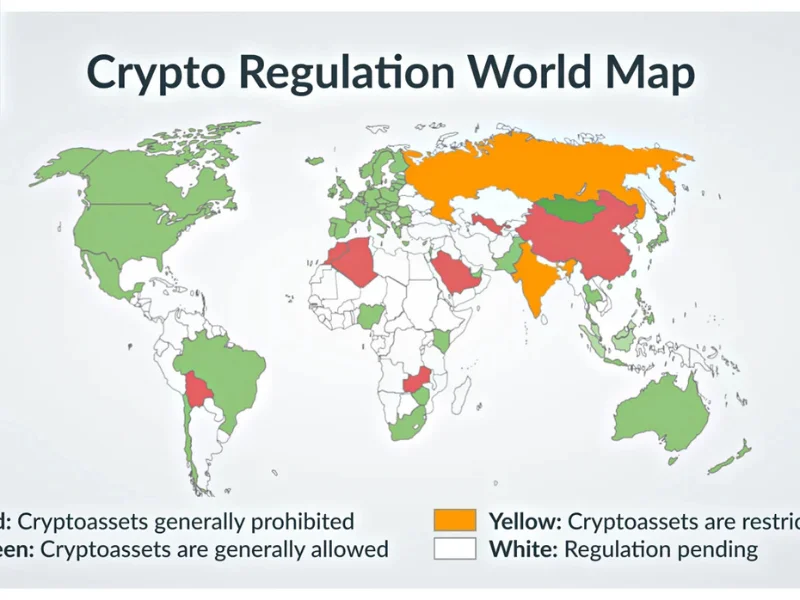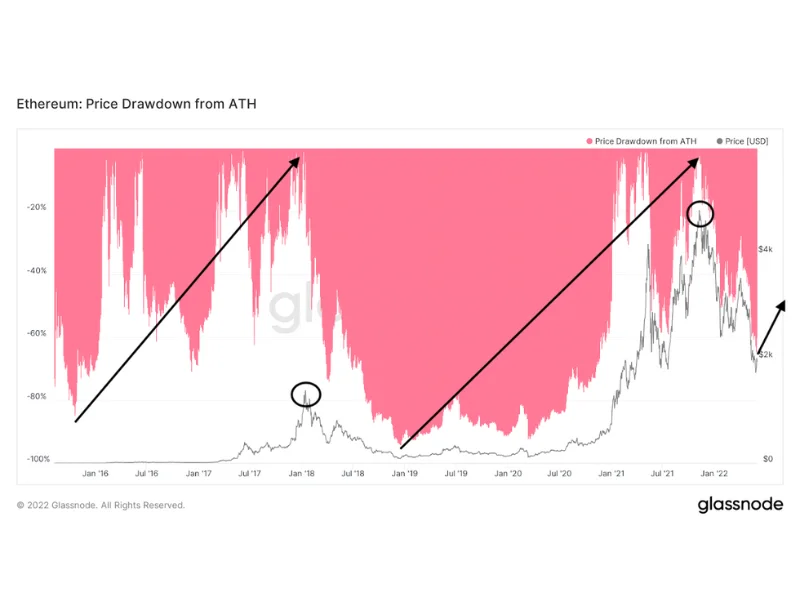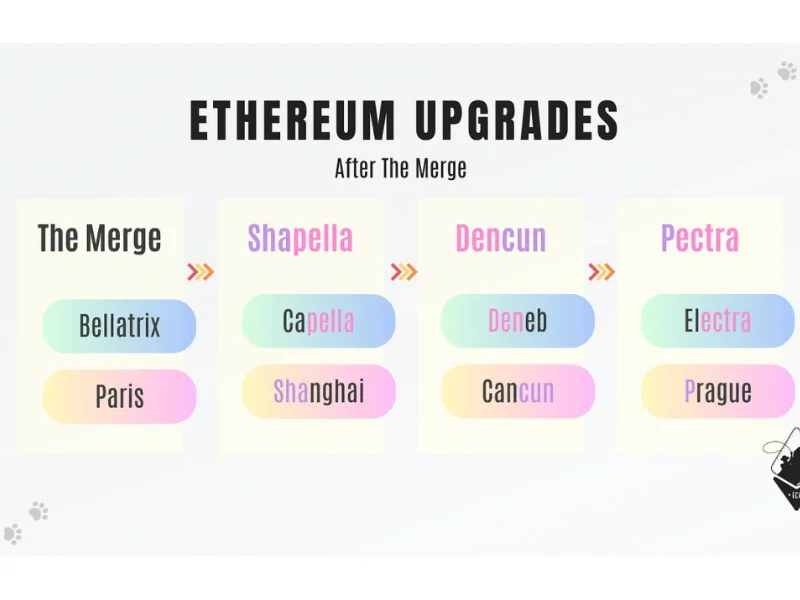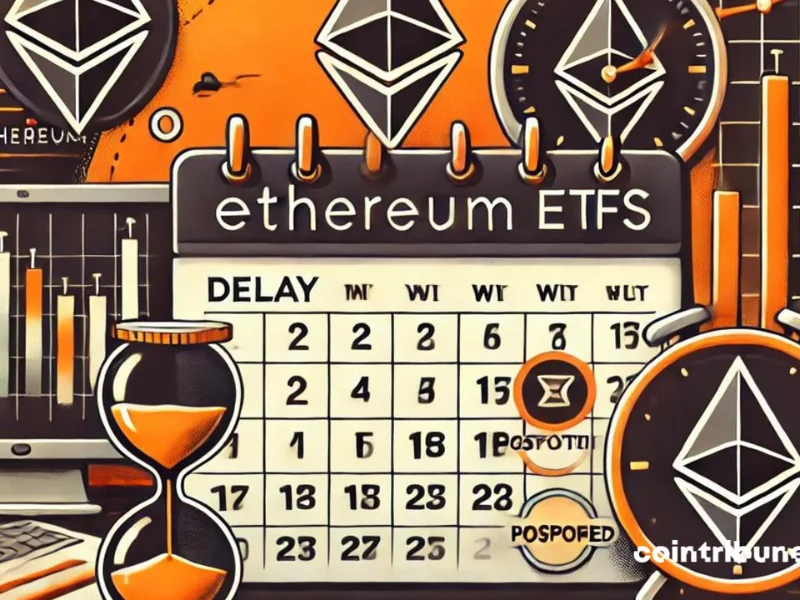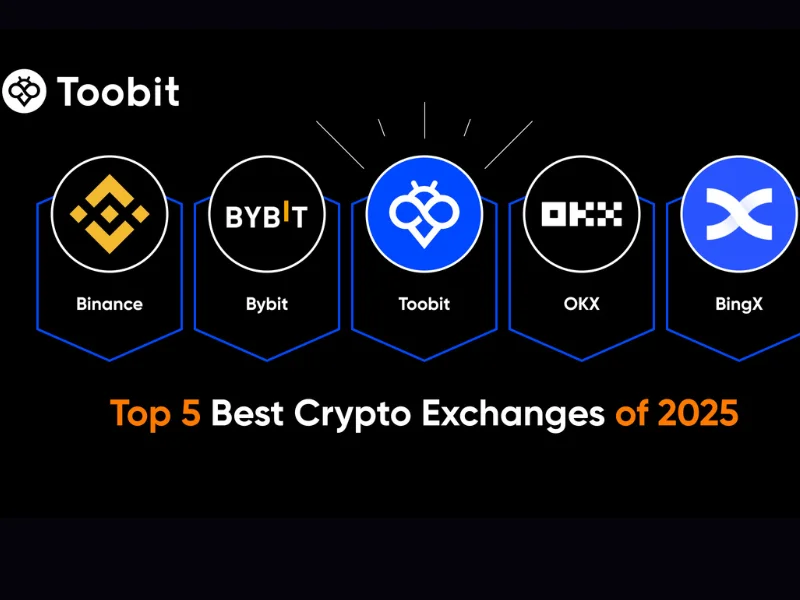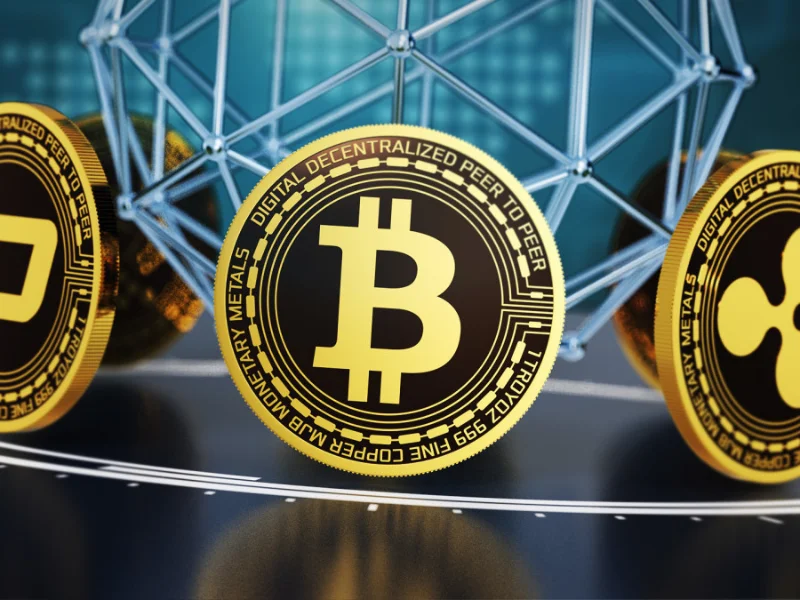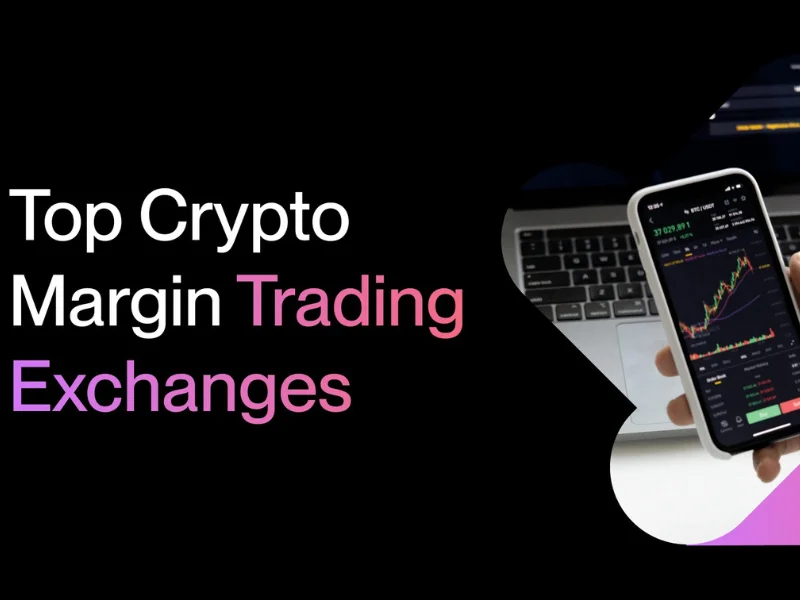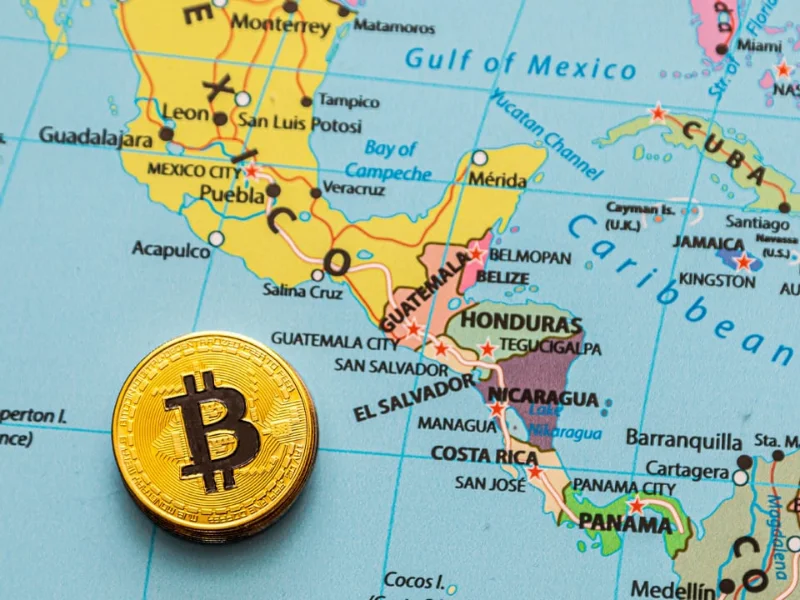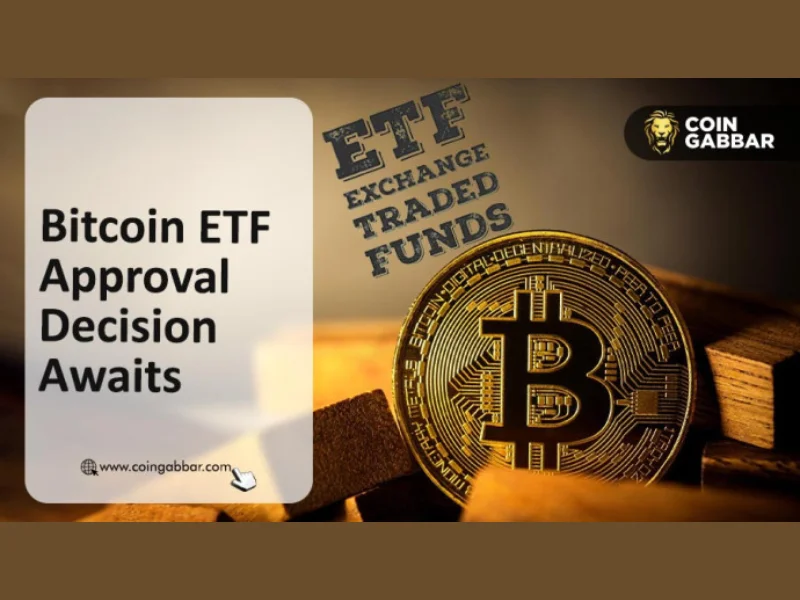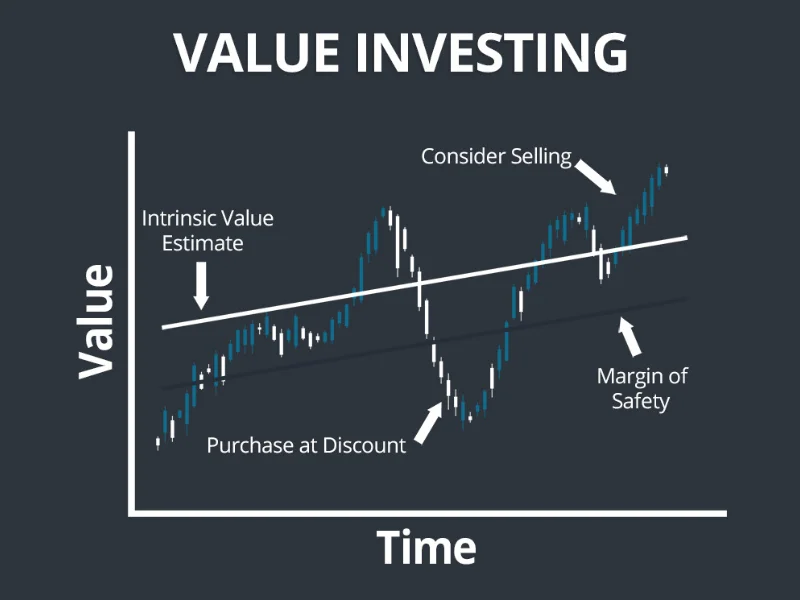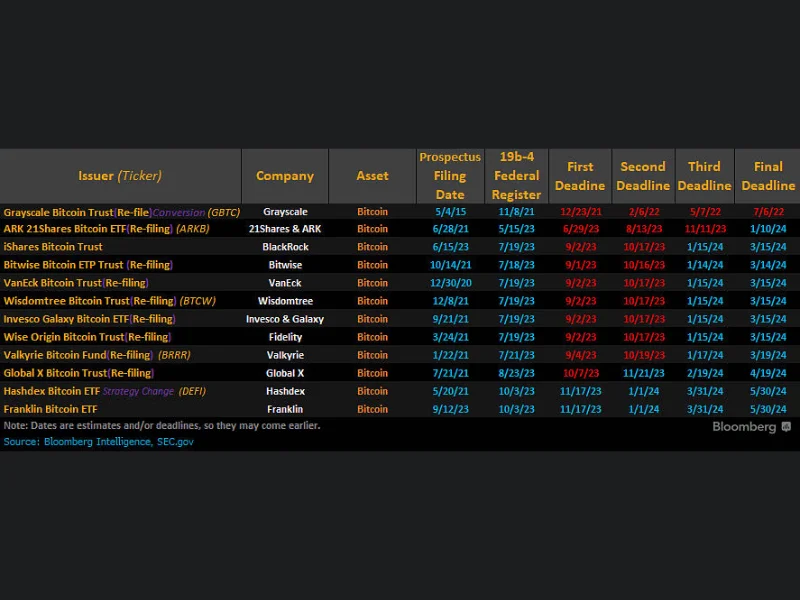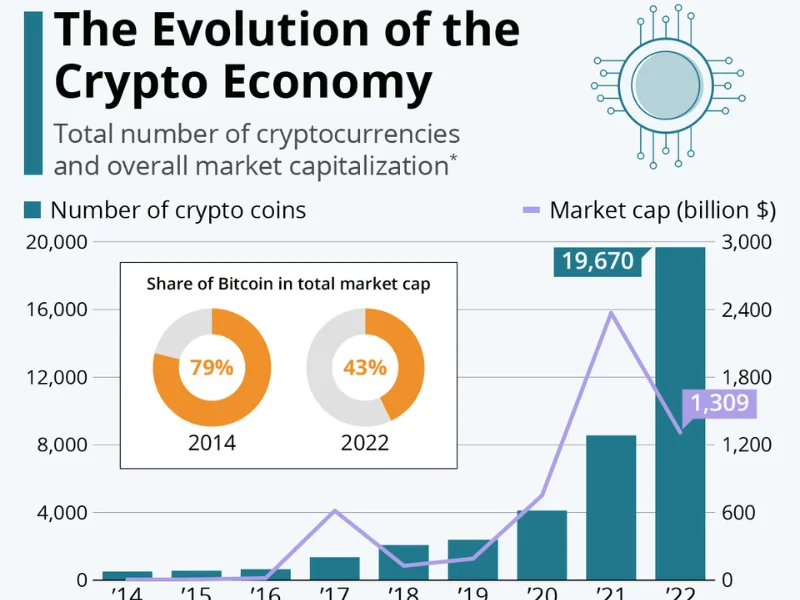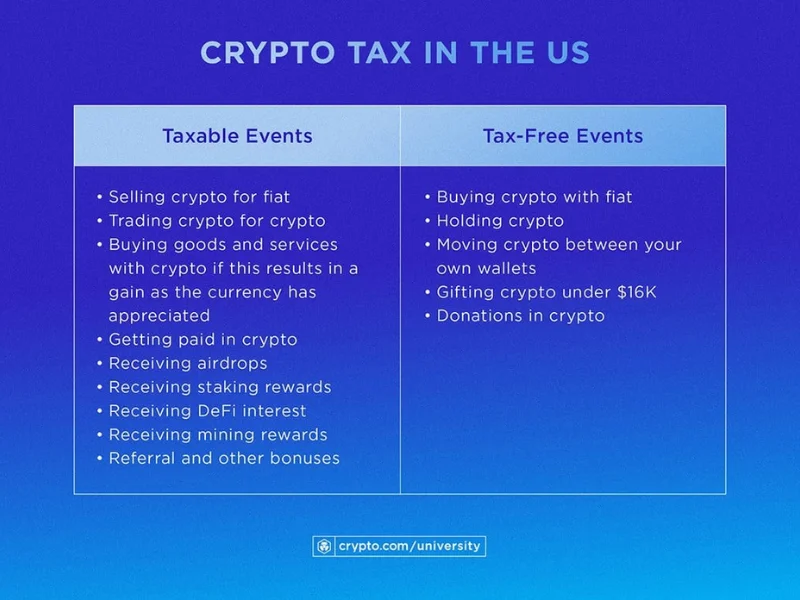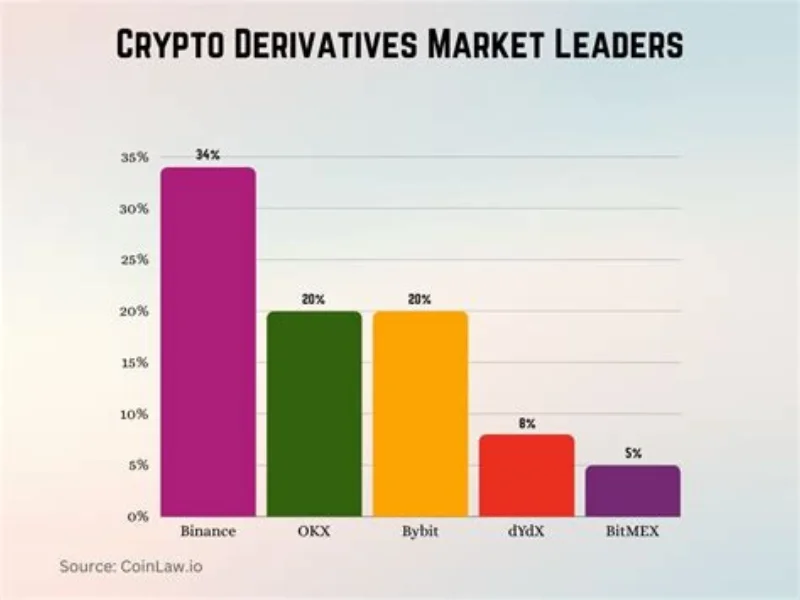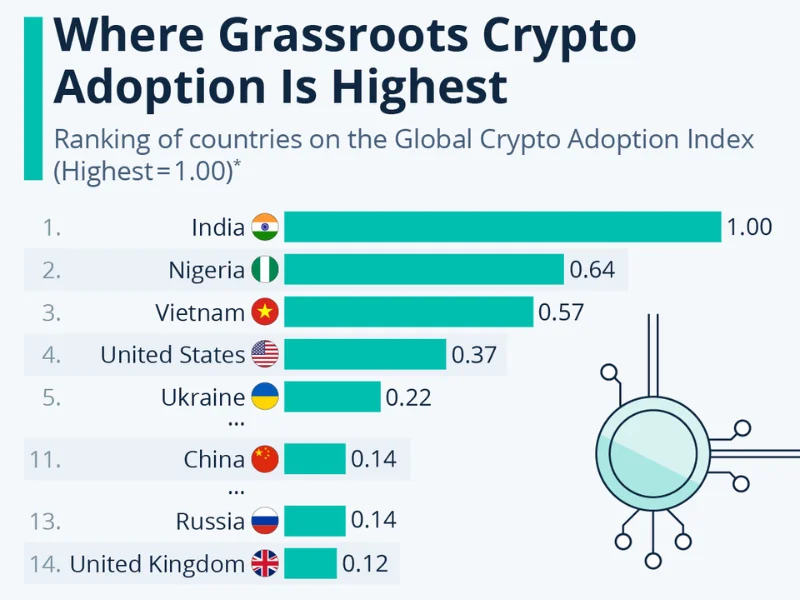1. Introduction
Purpose of the Article: This article provides an up-to-date overview of the cryptocurrency landscape, examining key trends and recent developments as of today. The crypto market evolves rapidly, so staying informed is crucial for both investors and enthusiasts. By understanding the latest market movements, technological innovations, regulatory shifts, and adoption patterns, readers can make better decisions in this fast-paced space. We also use El Salvador’s bold Bitcoin experiment – the first nation to adopt Bitcoin as legal tender – as a case study to gauge how the world’s crypto experiment is faring in practice.
Why Staying Updated Matters: The crypto industry is known for its volatility and innovation. Prices of assets like Bitcoin and Ethereum can swing dramatically in days, while new technologies (from Layer-2 scaling solutions to NFTs) emerge frequently. For investors, missing a regulatory update or market trend could mean overlooking significant risks or opportunities. Enthusiasts and builders also benefit from tracking trends to identify where the industry is heading. Reliable information from trusted platforms such as CoinDesk, Glassnode, and Bloomberg Crypto can help cut through the noise and provide data-driven insights. In a market where sentiment can shift on a tweet and new protocols can disrupt incumbents, an informed participant is far better equipped to navigate and thrive.
Key Insights Covered: In this article, we will explore:
- Market Movements: The current performance of the global crypto market (market capitalization, recent price trends of leading cryptocurrencies, and significant market drivers).
- Technological Innovations: Recent advancements in blockchain technology (scalability improvements, Ethereum 2.0’s impact, emerging projects like Solana) and security enhancements (smart contract security, zero-knowledge proofs).
- Regulation: The evolving legal landscape, from U.S. SEC and CFTC actions to Europe’s MiCA regulations and other global policy updates, including high-profile legal cases involving major exchanges.
- Adoption & Sentiment: Trends in both retail and institutional adoption – how more people and companies are using crypto – and the role of social media and influencers in shaping market sentiment.
- On-Chain Activity: What on-chain metrics (like transaction volumes, active addresses, liquidity in DeFi) tell us about the health of the crypto ecosystem.
- Emerging Trends: The growth of NFTs and DeFi’s evolution, plus the rise of stablecoins and progress on central bank digital currencies (CBDCs).
- Investor Behavior: How investor psychology and risk management strategies are adapting in the face of volatility and uncertainty.
- Case Studies: Specific examples, including Bitcoin’s halving cycles (and their price impacts) and Ethereum’s transition to 2.0, to illustrate broader points.
- Global Events Impact: How macroeconomic factors (inflation, recession fears) and geopolitical events influence crypto markets.
- Expert Opinions: Insights and predictions from industry experts about the future of crypto.
By the end, readers should have a comprehensive understanding of where the crypto market stands today and where it might be headed, along with an appreciation for why staying informed via credible sources is so important.
2. Global Market Trends
Current Market Performance & Capitalization: The global cryptocurrency market is experiencing robust growth in 2025. As of now, the total crypto market capitalization stands around $3.86 trillion[1], which reflects roughly a 67% increase from a year ago[2]. This surge underscores the sector’s recovery and expansion after the last “crypto winter.” Bitcoin (BTC), the largest cryptocurrency, alone accounts for over $2.18 trillion of the market (approximately 56.6% dominance) while Ethereum (ETH) comprises about 13.8%[3]. Notably, stablecoins (crypto tokens pegged to stable assets like the USD) collectively make up about $282 billion in market cap, roughly 7.3% of the total[3], highlighting their significant role in providing liquidity and a haven during volatility.
Major cryptocurrencies have hit new milestones in 2025. Bitcoin’s price pushed past its previous all-time high (around $69k in late 2021) and reached six figures earlier this year, peaking above the $110,000 mark[4]. In fact, BTC hit a fresh record high in early August 2025, which subsequently triggered some profit-taking and a healthy correction[5]. As of late August, Bitcoin is trading in the ~$110K–115K range after a brief pullback (about 9% off its peak)[6]. Ethereum, similarly, rallied to a new record around $4,946 in recent weeks[7]. Other top altcoins like BNB, XRP, Solana (SOL), etc., have also seen strong year-to-date gains, although with typical higher volatility than Bitcoin. For example, Solana climbed back toward its all-time high (~$290) during the year’s bull run[8], and XRP reached multi-year highs above $2.90 following favorable legal developments.
Trend Analysis: Recent market action shows a mix of bullish momentum and short-term consolidation. Over the past month, crypto prices experienced a rally followed by a moderate correction. In mid-August the total market cap briefly touched $3.9T, then dipped and bounced about 1% off the lows to ~$3.86T by late August[9]. Analysts describe this as a “bounce on the way down” rather than a full trend reversal, indicating caution as markets digest gains[9]. In the short-term (24h to 7d), volatility has returned: daily moves of 1–5% are common for major assets. For instance, Bitcoin traded between roughly $109K and $113K in a recent 24-hour span and was down about 1% on the day[10]. Ethereum saw a slightly larger daily swing (recently ~$4,400, down ~3% in 24h)[11]. Over a weekly view, prices have seesawed – a sharp mid-August sell-off (after BTC’s record high) was followed by a stabilization as some buyers stepped in[12][5]. Significant events driving these fluctuations include macroeconomic signals (like U.S. Federal Reserve commentary), ETF fund flow dynamics, and occasional large holder (“whale”) trades. For example, news of ETF outflows and profit-taking contributed to Bitcoin struggling to hold above $115K[12], while more dovish inflation data or hints of rate cuts have tended to boost sentiment.
Institutional Involvement & Economic Influence: Big-money players are increasingly shaping crypto market trends. Institutional investors – ranging from hedge funds and asset managers to corporations – have poured capital into Bitcoin and other digital assets, influencing both price and market structure. A prime example is MicroStrategy, the publicly-listed company led by Michael Saylor, which has aggressively accumulated Bitcoin as a treasury reserve. By mid-2025, MicroStrategy held about 629,376 BTC (nearly 3% of Bitcoin’s total supply) on its balance sheet[13], with continued purchases even above the $100K price level. This kind of corporate adoption, once unheard of, is now a bellwether for market confidence. Likewise, Grayscale – which operates the largest Bitcoin trust – signaled institutional demand by pursuing conversion of its trust into a spot ETF and even expanding into new crypto ETFs (e.g. filing for an Avalanche ETF)[14]. Traditional financial giants are also in the fray: for instance, Goldman Sachs reportedly expanded its Bitcoin holdings and investments in crypto ETFs[15], and BlackRock and others have filed for Bitcoin ETFs, reflecting Wall Street’s growing acceptance.
Weekly fund flow reports underscore this institutional impact. In mid-August, crypto investment products saw a record-breaking inflow of $3.75 billion in just one week – one of the highest ever – which pushed total assets under management in these products to an all-time high of $244 billion[16]. Notably, Ethereum-focused funds dominated those inflows (over $2.8B, ~77% of the total) as investors anticipated the network’s upgrades, while Bitcoin funds saw ~$552M in inflows[17][18]. However, by late August the trend flipped: outflows of $1.43B were recorded – the largest weekly withdrawal since March – as some institutions took profits and reacted to macro uncertainties[19]. Bitcoin funds suffered about $1B of those outflows in a week, whereas Ethereum proved relatively resilient with smaller outflows (~$440M)[20]. Analysts attributed the mid-August reversal partly to U.S. economic signals – early in the week, pessimism over Federal Reserve policy (concerns of continued tight monetary conditions) led to risk-off behavior and fund outflows[21]. Later in the week, a speech by Fed Chair Jerome Powell with a dovish tone helped sentiment recover, even spurring a modest $594M back into crypto funds[21]. This highlights how broader economic factors (inflation, interest rates, recession fears) are now tightly interwoven with crypto market movements.
Overall, institutional players (from companies like MicroStrategy to funds like Grayscale or ETF issuers) have added both liquidity and a degree of macro correlation to crypto. When economic optimism rises (e.g. expectations of looser monetary policy or hedge demand against inflation), we see increased institutional buying – which in 2025 helped drive Bitcoin to new highs as it is increasingly viewed as “digital gold” in portfolios[22][23]. Conversely, when global economic uncertainty or stricter monetary policy looms, these same players might pause allocations or even take some risk off the table, contributing to short-term price dips. Market sentiment gauges also show that inflationary pressures and fiat currency concerns (like unsustainable government deficits) have been a tailwind for crypto adoption as a hedge[24][23]. In summary, the global market trend in crypto is one of maturation: higher market capitalization, involvement of sophisticated investors, and sensitivity to economic cycles – all pointing to a market that is integrating with the wider financial system while still providing unique growth opportunities.
3. Technological Developments and Innovations
Blockchain Advancements: At the heart of the crypto industry’s evolution are continuous improvements in blockchain technology. A major theme has been scalability – increasing the number of transactions networks can handle, without sacrificing speed or security. In the past year, we’ve seen significant progress on this front. Ethereum’s long-planned transition to “Ethereum 2.0” (moving from Proof-of-Work to Proof-of-Stake consensus) was successfully completed with The Merge in late 2022, and subsequent upgrades have further improved the network. In 2023 and 2024, Ethereum introduced updates like the Shanghai upgrade (enabling staked ETH withdrawals) and, more recently, the Pectra upgrade in May 2025, which focused on efficiency and scalability. The Pectra upgrade improved Ethereum’s transaction throughput and user experience by making transactions faster and fees more predictable[25]. However, it also had nuanced effects on Ethereum’s on-chain economics – by making transactions more efficient, base fees have declined, reducing the amount of ETH “burned” (destroyed) and slightly decreasing the network’s deflationary pressure[26][27]. In other words, Ethereum’s supply is now expanding marginally (a modest 0.3% net annual inflation post-upgrade, versus being net deflationary when fees were very high)[27]. This trade-off was anticipated: better scalability often means lower fees, which is great for users and adoption even if it means validators rely a bit more on issuance than on fees as rewards.
To further address scalability, Ethereum’s roadmap includes sharding (parallelizing the network’s workload) and heavy reliance on Layer-2 solutions (like Optimistic and Zero-Knowledge rollups). Indeed, a big development is the rise of Layer-2 networks – such as Optimism, Arbitrum, zkSync, and Polygon’s zkEVM – which handle transactions off the main chain and periodically settle back to Ethereum. These L2s have exploded in usage, effectively increasing Ethereum’s overall capacity. In Q2 2025 alone, about $6.2 billion in net capital flowed into Layer-2 ecosystems[28] as users and developers seek lower fees and faster transactions. This shift has reduced congestion on Ethereum Layer-1, leading to much lower gas fees on the mainchain[26]. The long-term vision is that Ethereum Layer-1 becomes a secure settlement layer, while most day-to-day transactions happen on Layer-2 networks – combining scalability with the security of the base chain.
Beyond Ethereum, other blockchain protocols are pushing the envelope on performance. Solana is a prime example of a high-throughput chain leveraging a unique timestamping mechanism (Proof-of-History) alongside Proof-of-Stake. Solana aims to process thousands of transactions per second (TPS) on-chain, far above what Ethereum Layer-1 can do. In a recent stress test, Solana’s network briefly handled over 100,000 TPS – a milestone that no major blockchain had hit before[29][30]. Under normal conditions, Solana’s real transaction throughput is about 1,000 TPS (once you filter out validator voting messages and artificial load)[31][32], which still vastly outpaces Bitcoin (~7 TPS) and Ethereum (~15 TPS on L1). This performance has made Solana popular for certain applications like high-frequency trading and gaming. The network did face stability challenges in its early days (outages in 2021-2022 due to overload), but it has improved reliability in the past year. The fact that Solana’s DeFi ecosystem’s TVL climbed back to $10.7B (near its all-time high)[33] indicates renewed confidence in its technology. Other notable blockchain projects focusing on scalability and specialized use-cases include Avalanche, Algorand, and Polkadot (with its multi-chain sharding via parachains). Each is innovating on consensus algorithms and network design to strike the “trilemma” balance (decentralization, security, scalability).
In summary, the technological trend is clear: blockchains are getting faster and more efficient. Ethereum’s move to PoS and ongoing upgrades have reduced energy usage by >99% and set the stage for future throughput gains, while alternative Layer-1s like Solana show that speeds of 1k+ TPS are achievable with different architectures. Meanwhile, interoperability is improving – protocols and bridges now allow assets and data to move between chains more seamlessly than before, addressing the fragmentation issue. All these advancements are critical for blockchain tech to support mass adoption, as they lower costs and improve user experience.
Security Enhancements in Crypto: Alongside scalability, security remains a top priority in crypto tech development. High-profile hacks and exploits in previous years (especially in DeFi protocols and cross-chain bridges) have galvanized the community to innovate on security models. One major area of focus is decentralized security and auditing. Projects are increasingly using formal verification for smart contracts – mathematically proving the correctness of code – to prevent bugs. For example, some DeFi protocols now write critical contracts in Vyper or use tools like Certora and Solidify to rigorously test their code. We also see growth in bug bounty programs and decentralized insurance to mitigate the impact of any vulnerabilities that slip through.
A cutting-edge development in crypto security and privacy is the rise of Zero-Knowledge Proofs (ZKPs). ZKPs are cryptographic techniques that allow one party to prove a statement is true to another party without revealing any additional information. This seemingly magical capability has huge implications. On the privacy side, ZKPs enable things like proving your identity or credit score without revealing your personal data, or transacting on a blockchain without exposing amounts and addresses (think of projects like Zcash’s shielded transactions or Aztec network on Ethereum). On the scaling side, ZKPs power zk-Rollups, an L2 technology where a batch of transactions can be proven and compressed with a succinct proof posted to L1. Zk-rollups (like StarkNet, zkSync, Polygon’s zkEVM) can inherit Ethereum’s security while processing many transactions off-chain, making them a cornerstone of Ethereum’s scalability plans. Impressively, Ethereum developers are even planning an eventual Layer-1 integration of zk-EVM proofs to further optimize the base chain[34][35]. The momentum behind ZK tech is so strong that even standard-setting bodies have taken note: the U.S. NIST (National Institute of Standards and Technology) has an initiative to standardize zero-knowledge proof methods by 2025[36]. This standardization could accelerate enterprise and governmental adoption of ZKPs, ensuring these proofs are secure and interoperable across systems. The bottom line is that ZKPs are enhancing security (through privacy and robust math) across crypto applications, from protecting user data to enabling trustless scaling.
Another aspect of security is protecting smart contracts and funds from malicious actors. The industry has seen a shift toward multi-signature wallets, hardware security modules, and even experimental decentralized multi-party computation (MPC) wallets for both individuals and institutions to safeguard crypto assets. Protocols are also adopting decentralized governance safeguards – for instance, requiring time-locks and multi-step votes for any code changes, so that if a bad proposal passes, there’s time to react before it takes effect.
In the mining realm (for proof-of-work coins like Bitcoin), security comes from hashrate – and there, we’ve witnessed all-time highs in 2025. Bitcoin’s network hashing power exceeded 1 zettahash per second (ZH/s) for the first time in April 2025[37]. This means miners worldwide are computing an almost unfathomable 10^21 hashes per second. A higher hashrate makes the network more secure against 51% attacks and indicates robust investment in mining infrastructure. Interestingly, miner revenues per hash are near record lows due to high competition and Bitcoin’s lower block subsidy post-halving[38][39], but miners have become very efficient and are banking on price appreciation to compensate for thinner margins. The rising difficulty and hashrate show that Bitcoin’s proof-of-work security model continues to strengthen even as the block rewards shrink.
Impact of Smart Contracts and dApps: Smart contracts – self-executing code on blockchains – have unlocked an entire universe of decentralized applications (dApps) that are reshaping industries. One of the most transformative arenas has been Decentralized Finance (DeFi). Platforms like Uniswap (decentralized exchange), Aave (lending protocol), Curve (stablecoin swap), and Compound (money market) have grown into multi-billion dollar networks handling lending, borrowing, trading, and asset management without traditional intermediaries. DeFi effectively turned every user with a crypto wallet into their own bank/trader, and it has been expanding into new territory. In 2023–2025, we’ve seen DeFi protocols introduce more sophisticated financial instruments: options and derivatives (e.g., Dopex, dYdX), asset management vaults (Yearn, Enzyme), and even under-collateralized lending using on-chain credit scores or real-world asset collateral.
Importantly, DeFi is now bridging with traditional finance through tokenization of real-world assets (RWA). Projects are creating tokens that represent ownership in government bonds, real estate, or company equities, and these tokens can be used in DeFi protocols. This RWA trend means dApps might soon facilitate borrowing against, say, tokenized Treasury bills or trading tokenized stocks 24/7. It’s still early, but interest is strong because it combines DeFi’s efficiency with real-world value. Even centralized institutions are taking note – Goldman Sachs launched a digital asset platform, and multiple banks are experimenting with offering DeFi yields to clients, essentially acting as a front-end while the backend is a protocol like Aave or Compound.
Regarding usage metrics: the Total Value Locked (TVL) in DeFi is a common gauge of adoption. Crypto’s total DeFi TVL is in recovery mode – currently around $150–200 billion across chains (fluctuating with crypto prices), which is below the peak of ~$250B in late 2021 but significantly higher than just a few years ago. On Ethereum, despite ETH’s price hitting new highs, DeFi TVL has not yet surpassed its prior peak; it sits around $91B on Ethereum versus ~$108B at the 2021 peak[40]. This reflects some structural changes: more competition from other chains (like BSC, Solana, Avalanche) and more capital-efficient protocols that do more with less locked capital (e.g., Lido liquid staking has huge influence with relatively lower TVL since it issues liquid staked ETH). Additionally, many retail users who drove the DeFi Summer 2020 boom have not returned at the same scale, as evidenced by Ethereum’s DeFi usage in ETH terms (only ~21M ETH locked now vs 29M at the peak)[41]. Nonetheless, DeFi continues to evolve and eat into traditional finance use cases. Platforms like Uniswap v4 (proposed) are looking to add features rivaling centralized exchanges, and Layer-2 DeFi on Arbitrum, Optimism, and others is flourishing since transactions there are cheap and fast.
Outside of finance, smart contracts and dApps are expanding into other industries: for example, NFT marketplaces and games bring blockchain to digital art and collectibles; decentralized social media platforms (like Lens Protocol or the foreseen Twitter integration with crypto by some entrepreneurs) aim to give users control of their social identities; and supply chain management uses smart contracts for provenance tracking of goods. Another burgeoning area is decentralized autonomous organizations (DAOs) – essentially online, blockchain-governed cooperatives – which use smart contracts to manage membership and treasury funds. DAOs are investing in real-world assets, funding protocol development, and even serving as social clubs or philanthropic groups, all governed by token holder votes.
On-chain data from sources like Dune Analytics and Messari shows steady growth in dApp usage. For instance, daily active users on NFT platforms and blockchain games (particularly on chains like Polygon, Wax, and Solana) number in the hundreds of thousands. Unique addresses interacting with DeFi protocols have also cumulatively risen, indicating that while the hype cycles come and go, the base of users engaging with smart contracts keeps expanding. As of mid-2025, Solana’s daily active addresses (around 1 million) actually surpassed Ethereum’s (~0.5M) by a wide margin[42], thanks to popular Solana apps (especially those related to memecoins and gaming). This is a remarkable indicator of how newer networks optimized for certain use cases can onboard masses of users – even if many are light, frequent transactions – and it’s pushing the whole industry to accommodate millions of users in a decentralized way.
In summary, smart contracts are no longer a niche concept – they are running exchanges, lending platforms, games, media platforms, and more. This is shaping new industries by disintermediating traditional players and unlocking novel models (e.g., play-to-earn gaming, NFT-based memberships, algorithmic stablecoins). As we progress, expect the line between “crypto industry” and other industries to blur, with decentralized apps becoming just “apps” that people use, possibly without even realizing blockchain is under the hood.
4. Regulatory and Legal Landscape
Current Regulatory Updates: The regulatory environment for cryptocurrencies has been dynamic and varies widely across the globe. In the United States, there’s been a notable shift between 2023 and 2025. Under the previous SEC leadership, the approach was often described as “regulation by enforcement,” exemplified by the Securities and Exchange Commission (SEC) launching high-profile lawsuits against major crypto exchanges like Binance and Coinbase in 2023. Those suits alleged that the exchanges operated unregistered securities platforms and listed tokens that should be regulated as securities. However, in 2025 the U.S. saw a change in administration and regulatory tone. In a surprising development, the SEC voluntarily dismissed its lawsuit against Binance in May 2025, with prejudice (meaning it cannot refile the case)[43][44]. Earlier, in February 2025, the SEC had also dropped its case against Coinbase[44]. These actions signaled a major policy pivot. The new SEC Chairman – Paul Atkins, appointed by President Donald Trump – indicated a preference to establish “clear rules of the road” for crypto through formal regulation rather than litigation battles[45]. The dismissal of the Binance case was hailed by the industry as a “landmark moment” and came with acknowledgement that innovation should not be stifled by unclear rules[46][47].
Now, U.S. regulators are working on concrete guidelines: both the SEC and the Commodity Futures Trading Commission (CFTC) have set up special crypto regulatory initiatives and “working groups.” Topics on the agenda include how to define and classify digital assets (security, commodity, or other), how to oversee stablecoin issuers (there’s bipartisan discussion on a stablecoin-specific law), and how to integrate crypto trading platforms into existing financial regulatory frameworks without crushing their operations. We’ve also seen movement in Congress – for example, proposals for a Digital Asset Market Structure bill and stablecoin regulations passed some committee hurdles, though final laws are still pending. Notably, the U.S. Federal Reserve and OCC are providing guidance for banks that engage with crypto, focusing on risk management and reserve requirements.
In Europe, a comprehensive regulatory framework has already been approved: the Markets in Crypto-Assets (MiCA) Regulation. MiCA was passed by the EU in 2023 and is in the implementation phase (phasing in through 2024 and 2025). This landmark law creates uniform rules across EU member states for crypto asset issuance and services. Under MiCA, companies offering crypto trading, custody, or exchange services will require a license (with prudential and consumer-protection requirements), and issuers of stablecoins (termed “asset-referenced tokens” or “e-money tokens”) have to meet strict reserve and reporting standards. By the end of 2024, parts of MiCA – like the rules for stablecoin issuers – kicked in, and by late 2025, the licensing regime for broader crypto service providers is taking effect[48]. Regulators like ESMA (European Securities and Markets Authority) have been preparing guidelines, and indeed by 2025 national regulators have started granting MiCA compliance licenses to exchanges and custodians. The MiCA approach is significant because it provides clarity and a single market across 27 countries, potentially making the EU a more straightforward jurisdiction for crypto business compared to the patchwork in the U.S.
The U.K., no longer in the EU, has been crafting its own path. The UK’s Financial Conduct Authority (FCA) initially took a very cautious stance – banning crypto derivatives for retail in 2021 and enforcing registration for any crypto businesses under anti-money laundering (AML) rules. In 2023–2024, the FCA introduced new marketing rules requiring clear risk warnings on crypto ads and banning incentives like referral bonuses to retail consumers. Compliance with these was spotty, and the FCA even had some firms temporarily halt UK promotions until they got it right. However, in a noteworthy development, by August 2025 the FCA decided to open up retail access to crypto-backed Exchange Traded Notes (ETNs) under certain conditions[49][50]. The FCA announced that retail investors will be allowed to buy crypto ETNs that are listed on approved exchanges (like the London Stock Exchange) – this reflects an understanding that the market has matured and “products have become more mainstream and better understood,” as an FCA director put it[51]. Protections (like adherence to financial promotion rules and absence of compensation scheme coverage) remain in place, but it’s a step toward a more permissive regime. The UK government is also working on broader crypto legislation to establish a regime for crypto trading platforms and stablecoins to be supervised like other financial services, possibly integrating them into the existing Electronic Money or Payment Services rules. In essence, the UK is trying to strike a balance between innovation and consumer protection, and is now signaling that with proper safeguards, retail crypto products can be allowed.
Elsewhere in the world, regulations vary: Asia presents a mixed picture. Japan has a fairly strict but clear framework (exchanges must be licensed and segregate customer assets; Japan was one of the first to legalize crypto as property and regulate exchanges after Mt. Gox). Singapore positions itself as crypto-friendly but with robust AML controls – it introduced licensing under the Payment Services Act and has been selective in approvals. Hong Kong made headlines in 2023 by opening up licensed retail crypto trading for certain large-cap tokens, marking a shift to rebrand Hong Kong as a crypto hub (with a licensing regime in 2024). China, of course, remains officially prohibitive on trading and mining, but their focus has been on the digital yuan (CBDC); many Chinese users still access crypto via OTC and offshore platforms in a gray market. Middle East: The UAE (particularly Dubai’s VARA) has set up a welcoming regulatory environment to attract crypto companies, issuing licenses to exchanges under clear rules.
Legal Cases & Precedents: The past couple of years have produced several legal precedents with broad implications. One of the most significant was the Ripple (XRP) case in the U.S. – in mid-2023, a judge ruled that XRP token sales on exchanges did not constitute securities offerings (since buyers didn’t have a reasonable expectation of profits tied to Ripple’s efforts for those blind exchange transactions), whereas XRP sales to institutional investors (with contracts) did qualify as securities offers. This split decision gave the crypto industry partial victory and clarity that many tokens, when sold to the general public, might not be deemed securities by the courts. It directly influenced the SEC’s approach and is likely why some enforcement cooled until rules are clarified.
Another big saga: Binance vs various regulators. Binance not only faced the SEC lawsuit (now dismissed)[52], but also enforcement actions elsewhere – e.g., the CFTC had sued Binance in early 2023 for offering illegal futures to U.S. customers. That case was on hold as Binance negotiated; and in late 2023, Binance and its founder Changpeng Zhao (CZ) were charged by the U.S. Department of Justice for AML violations. By 2024, CZ pleaded guilty to charges of willfully failing to implement AML programs and agreed to step down as CEO, with Binance paying hefty fines (over $4B)[53][54]. This was a watershed moment: one of the industry’s largest figures being held accountable, and it underscores that compliance is not optional if crypto businesses want to operate globally. The outcome sets a precedent that exchanges must have rigorous compliance or risk criminal consequences. Binance has since been restructuring and attempting to become more compliant (including possibly a change in leadership and operations).
Coinbase’s legal battles have also shaped the landscape. While the SEC’s case against Coinbase (for being an unregistered securities broker) was dropped[44], Coinbase scored a win in court compelling the SEC to respond to its request for clearer rulemaking (though the SEC basically said “not yet” in response). Coinbase has also actively engaged with policymakers, and its fate (being a U.S. publicly traded exchange) is a barometer for U.S. crypto regulation. So far, the trend suggests that regulatory clarity will eventually come through legislation or formal rules, rather than forcing a company like Coinbase out via court order.
In Europe, MiCA itself is the big legal framework, but we also see enforcement of AML: e.g., exchanges have to implement strict KYC and travel rule (transaction reporting) compliance. The EU’s Transfer of Funds Regulation now mandates that even unhosted wallet transactions above certain thresholds need info collected by service providers – a challenge for privacy advocates.
Precedents in other regions: India flirted with a crypto ban but settled on a heavy tax regime (30% tax on gains and 1% TDS tax on every transaction), which has dampened the market but not banned it. Russia, after initial hostility, is considering using crypto for cross-border trade to circumvent sanctions, illustrating how geopolitics can influence legal stances.
Overall, the legal landscape is trending toward integration of crypto into existing regulatory frameworks. The journey involves friction – like the SEC cases – but the recent U.S. policy shift suggests regulators want to craft bespoke rules (e.g., safe harbor for tokens, new definitions for crypto assets) rather than rely solely on applying 90-year-old securities laws. Meanwhile, clear frameworks like MiCA in the EU are setting a high bar for consumer protection and could become a reference model globally. For market participants, these developments reinforce the need to pay close attention to policy changes: a new law or enforcement action can significantly impact market sentiment and the viability of certain business models. On the bright side, the move toward clarity (licenses, guidelines) will likely encourage broader adoption by institutions that were waiting on the sidelines due to legal uncertainty.
5. Adoption and Market Sentiment
Retail and Institutional Adoption: Cryptocurrency adoption has grown significantly on both the retail (individual) and institutional fronts. On the retail side, global participation in crypto is at an all-time high. An estimated 560–600 million people worldwide now own some form of cryptocurrency[55] – roughly 7–8% of the world’s population – and this number continues to climb. In fact, 2024 saw a 172% surge in global crypto adoption, with particularly high growth in countries like India, Nigeria, and Indonesia[55]. In some nations with economic instability or currency controls, nearly 1 in 3 people have turned to digital assets as either an investment or a remittance tool[55]. This grassroots adoption is often driven by young, tech-savvy populations and by real-world utility: for example, people in inflation-hit economies using stablecoins for savings, or migrant workers using Bitcoin for cheaper cross-border transfers.
One prominent real-world adoption case is El Salvador. In 2021 El Salvador became the first country to declare Bitcoin legal tender, effectively conducting a nationwide experiment on crypto adoption. Two years on, the results are mixed but instructive. President Nayib Bukele touts the initiative as a “net positive” for the country – citing benefits like greater international branding, increased tourism, and foreign investment interest in El Salvador[4][56]. The move put El Salvador on the map as “Bitcoin country,” and indeed tourism spiked in 2022, and Bitcoin enthusiasts have been visiting or even relocating there (driving a mini tech sector). The government also claims to have a public crypto wallet (Chivo wallet) holding $400 million in BTC reserves[57][58], and they’ve launched Bitcoin-backed initiatives like volcano geothermal mining and proposed Bitcoin bonds. However, domestic adoption among Salvadorans has lagged. Surveys indicate that a large majority of Salvadorans rarely use Bitcoin for daily transactions – one 2023 poll found 88% of people hadn’t used Bitcoin that year despite the government’s push[59]. Many still prefer U.S. dollars (El Salvador’s other legal currency), and businesses report limited Bitcoin usage after the initial curiosity faded. The government even had to scale back a law that mandated all merchants accept BTC; under a new IMF-backed agreement, Bitcoin acceptance is now voluntary rather than compulsory for businesses[60][61]. So, while El Salvador’s experiment hasn’t (as skeptics warned) crashed the economy or caused financial instability – life goes on and the feared IMF sanctions didn’t materialize – it also hasn’t turned the average Salvadoran into a Bitcoin user overnight. It shows that even with national-level support, behavioral adoption takes time and perhaps more education or incentive. Other countries are watching this closely, and a few (like the Central African Republic) even tried their own version of legal tender status, though with limited success so far.
Apart from nation-level moves, retail adoption is evident in the proliferation of crypto wallets and user-friendly apps. Millions of people now have mobile wallets like Coinbase, Binance, or regional apps that allow them to buy, sell, and store crypto. Payment companies are integrating: you can use wallets like Cash App, PayPal, or Revolut to handle Bitcoin, and we see crypto debit cards in many countries. Digital wallet user counts keep rising – many of these people start by buying a small amount of Bitcoin or Ethereum as an investment, and gradually some experiment with DeFi or NFTs.
Institutional adoption has likewise accelerated. We’ve discussed how corporations (like MicroStrategy) and traditional financial institutions are involved, but to highlight sentiment: a Deloitte CFO survey in mid-2025 found a significant portion of corporate finance executives expect to be using crypto for routine transactions or reserves in the next few years[62]. Hedge funds and asset managers have also entered the space as an asset class – today, dozens of crypto-focused funds exist, and even stalwarts like BlackRock and Fidelity have either launched crypto products or made strategic investments (for instance, Fidelity offers Bitcoin in 401k retirement accounts on an opt-in basis, and BlackRock’s proposed iShares Bitcoin Trust ETF is pending approval). Pension funds and endowments – traditionally very conservative – have dipped their toes by allocating small percentages to venture funds or buying publicly traded crypto stocks (like Coinbase or Bitcoin mining firms). This institutional trickle could become a flood if regulatory clarity improves, as suggested by the Bitwise analysis that U.S. pension plan allocations could drive Bitcoin to $200k levels[63].
Another dimension of adoption is mainstream companies integrating crypto. Examples: Tesla famously bought $1.5B in Bitcoin (in 2021) and still holds a portion; fintech companies like Square (Block) derive significant revenue from Bitcoin sales; and merchants from Starbucks to Microsoft accept Bitcoin in some form (often via payment processors). More recently, stablecoins have seen adoption in commerce: Tether (USDT) and Circle’s USDC are widely used for B2B settlements in the crypto industry, and some merchants in Asia and Latin America accept USDT as an alternative to dollars.
In summary, retail adoption is broadening in geographic and demographic reach, while institutional adoption is lending credibility and stability to the market. Each reinforces the other: as more individuals use crypto, institutions see opportunity (more customers, new markets), and as more big players get involved, individuals gain confidence that crypto is “here to stay.”
Market Sentiment and Social Influence: Crypto markets are famously sentiment-driven. Emotions like fear and greed can cause outsized reactions – thus the popularity of the “Crypto Fear & Greed Index” which tracks sentiment from extreme fear to euphoria. After the harsh bear market of 2022, sentiment in 2025 turned bullish as prices recovered to new highs. Retail enthusiasm returned – evident in the resurgence of meme coins and vibrant chatter on social media – but with some caution after past lessons.
Social media (especially Twitter, now X) and online communities (Reddit, Discord, Telegram, YouTube) play a massive role in shaping crypto sentiment. Influential figures can move markets, at least for short periods. The most notorious example is Elon Musk: his tweets about Dogecoin and Bitcoin in 2021 sent those prices soaring or plunging. That dynamic persists – a single tweet or announcement from a key influencer can spark a mini buying frenzy or panic sell. In 2025, figures like Musk still comment (e.g., regarding integrating crypto into X or commenting on AI coins), but the market has grown larger, so such impacts are a bit more muted on the majors (less so on small altcoins). Additionally, crypto-native influencers – people like certain traders on Twitter, analysts at firms like Messari, or popular YouTubers (Coin Bureau, BitBoy, etc.) – have large followings that trust their analysis or calls, which can create self-fulfilling momentum in the short run.
Platforms like Reddit have dedicated crypto communities (e.g., r/CryptoCurrency with millions of members) where retail investors share news, memes, and sometimes coordinate (the way WallStreetBets did for stocks). Sentiment on these boards often reflects retail risk appetite – a flurry of positive posts and upvotes usually corresponds to bullish sentiment and vice versa. Analytics firms track this: for instance, Santiment monitors the frequency of crypto ticker mentions on social media and the positivity/negativity of the discourse. They noted that as Bitcoin hit new highs this year, Bitcoin’s social dominance (share of crypto chatter) spiked to historic levels[64], which can paradoxically be a contrarian indicator (extreme hype sometimes precedes a correction). Conversely, in bear phases, social engagement drops and sentiment becomes very bearish – often a sign of capitulation that savvy investors look for to start buying.
Another element is the emergence of influencer-led investment groups and platforms. Some well-known crypto personalities have launched their own tokenized communities or DAOs. For example, people have created social tokens (personal cryptocurrencies) that represent a brand or community following an influencer, granting holders special access or content. These can influence market sentiment too, as they gamify community engagement.
Messari and CoinCenter (a policy think tank) also contribute to sentiment not by hype but through education and advocacy. When these respected organizations put out reports (like Messari’s annual Crypto Theses or CoinCenter’s policy briefs), they help shape the narrative among serious investors and lawmakers. For instance, if Messari’s report is bullish on Web3 gaming or layer-2 adoption, it can tilt sentiment among institutional readers positively toward those sectors. CoinCenter’s advocacy for reasonable regulation can reassure the community that there are voices defending innovation in DC, indirectly boosting confidence.
One distinct trend in sentiment is the “mainstream-ification” of crypto news. Coverage on Bloomberg, CNBC, and other traditional outlets has increased. Bloomberg Crypto’s daily segment and Reuters crypto feeds give constant updates, meaning macro and traditional investors are also influenced by crypto sentiment now. Headlines like “Bitcoin breaks $100k” or “Major bank offers crypto custody” on mainstream media bring in waves of new interest or trust.
Market sentiment indicators: We have on-chain ones like Nansen’s Smart Money indices – e.g., Nansen’s Stablecoin Risk Appetite Indicator measures what percentage of smart money wallets are in stablecoins versus deployed in crypto investments[65][66]. When it’s high (lots of stablecoin holding), it indicates a risk-off (bearish) sentiment; when it falls below a threshold (meaning smart money is deploying capital into crypto), it’s a bullish sign of increasing risk appetite[67][66]. As of mid-2025, that indicator has signaled improving risk appetite as smart money reduced stablecoin holdings during the bull run, but it hasn’t hit extreme lows (suggesting some caution remains and plenty of dry powder available). We also have the traditional fear/greed index (which aggregates volatility, volume, social, Google trends, etc.) – it hovered in “Greed” territory for much of early 2025, occasionally tipping to “Extreme Greed” during big rallies, and then cooling off to neutral on pullbacks.
Finally, psychology patterns in crypto tend to repeat: early bull phase optimism, mid-bull euphoria with many believing “this time is different” and everyone is a genius trader, then a sharp correction that reminds people of risk, etc. By staying aware of these patterns and using sentiment tools, seasoned investors try to do the opposite of the crowd (buy when fear is high, take profits when greed is rampant). For newcomers, the community always emphasizes educating oneself and only investing what one can afford to lose, because sentiment can turn quickly on negative news or if a bubble forms and bursts.
In conclusion, crypto adoption is steadily increasing both at retail and institutional levels, and market sentiment – heavily influenced by social media and macro trends – can amplify price movements. The interplay of new users entering, big players adopting, and the hive-mind of social networks creates a unique environment where narrative and data are both king. Those who actively track community sentiment (on Twitter, Reddit, etc.) alongside on-chain and market indicators can gain an edge in anticipating the market’s emotional swings.
6. On-Chain and Blockchain Activity
Tracking On-Chain Activity: One of the advantages of public blockchains is that a wealth of data is available for analysis – often in real time – to gauge the health and usage of the network. These on-chain metrics serve as fundamental indicators, analogous to economic indicators in traditional finance. Key metrics include transaction volume, active addresses, hash rate (for PoW chains), staking participation (for PoS chains), and more.
On-chain analysis firms like Glassnode, CryptoQuant, and Nansen compile these metrics to derive insights. For example, active addresses represent the number of unique blockchain addresses sending or receiving transactions in a given period – a proxy for how many users (or at least addresses) are active. In Bitcoin’s case, active addresses have been trending upward. As of August 2025, roughly 700k–800k Bitcoin addresses are active daily[68][69], which is a notable increase (Glassnode reported about a +8% uptick to ~793k around mid-August)[68]. This suggests growing participation, possibly due to new users and also expanding usage via second-layer solutions (e.g., the Lightning Network, although those transactions aren’t directly on-chain) and Ordinals inscriptions (Bitcoin’s pseudo-NFTs) which briefly spiked usage. Similarly, transaction fees on Bitcoin spiked by ~10% week-over-week in that same mid-August period[68], implying higher demand for block space – usually a result of increased activity or congested periods[69]. Rising fees can indicate the network is very much in use (and willing to pay for priority), though extremely high fees might also price out some users. Currently, Bitcoin’s fees are moderate except during brief surges; Ethereum’s fees have been consistently lower than in previous cycles thanks to L2s, except for when an NFT craze or memecoin trading clogs the network.
Another major on-chain metric is total transaction volume (the total value transacted on the blockchain). High transaction volumes can reflect greater economic activity – e.g., bull markets often see on-chain volumes swell as more value moves between investors (for buying, selling, arbitrage, etc.). In 2025, adjusted on-chain volume for Bitcoin and Ethereum has risen compared to the bear market lull, though interestingly, some of that activity has migrated to L2s or alternative chains. For Ethereum, if you include L2 transactions, the “real” transaction count and volume hitting the network ecosystem is at record highs (multiple millions of tx per day across L1 + L2).
Mining activity and hash rate are another vital sign for proof-of-work chains. As mentioned, Bitcoin’s hash rate reaching all-time highs (~1 ZH/s)[37] is extremely bullish from a security standpoint – more hashing power means the network is more resilient against attacks and underscores miners’ confidence (they’re investing in more machines because they expect long-term profitability). The network difficulty adjustments have also hit records to keep block times steady[70][71]. Mining geographic distribution has improved since China’s 2021 ban; now the U.S., Middle East (Kazakhstan), and others have significant shares. High hash rate doesn’t directly influence price short-term, but it often correlates with miners’ positive outlook. In contrast, if hash rate were dropping significantly, it could signal miner capitulation (often in bear markets) which can pressure prices as they might sell off holdings to stay afloat.
For proof-of-stake networks like Ethereum post-Merge, staking metrics are analogous to hash rate. The percentage of ETH staked, number of validators, and staking yield are tracked. Ethereum now has over 26 million ETH staked (about 20%+ of total supply) in its Beacon Chain, with hundreds of thousands of active validators. A high and rising stake participation indicates many holders are locking up their ETH to secure the network (and earn yield ~4-5%), reflecting trust in the protocol. After the Shanghai upgrade allowed withdrawals, there was a fear of mass unstaking, but in reality net staking has grown – a sign that Ethereum’s PoS is stable and attractive to participants.
On-Chain Indicators & Market Health: Analysts often look at ratios like MVRV (Market-Value-to-Realized-Value), which compares market cap to the aggregated cost basis of coins (realized cap). In early 2025, Bitcoin’s MVRV went above 1 (bullish zone) and even heated near levels that in past cycles indicated a top was forming, but it cooled off a bit after the recent correction. Percent supply in profit is another indicator (the share of coins whose current price is above the price at which they last moved). Currently, about 94% of Bitcoin supply is in profit[72][69] – meaning only 6% of coins were acquired at higher prices than today, which are basically those bought at the very peak. Such a high profit ratio is a double-edged sword: on one hand it affirms the strength of the rally (almost everyone is “in the money”), on the other hand it raises the risk of profit-taking – some holders might decide to realize gains, which could increase selling pressure[72][73]. In fact, Glassnode flagged that historically when >95% of supply is in profit, markets are near euphoric and vulnerable to pullbacks[72][74]. So these metrics help investors gauge where we are in the cycle.
Liquidity and Market Movements: Liquidity refers to how easily assets can be bought or sold without causing large price impacts. In crypto, liquidity comes from both centralized exchanges (CEXes) order books and decentralized finance liquidity pools. Over the past year, market liquidity has generally improved for the major cryptocurrencies. Data providers like Kaiko report that order book depth for BTC and ETH on major exchanges is at or near all-time highs[75] (meaning you can execute larger orders now with minimal slippage compared to a few years ago). This is partly due to more participation from market makers and the entrance of institutional market-making firms (some migrated from traditional markets to crypto or expanded operations). For example, a billion-dollar sell order of BTC, which a few years ago could have crashed the price 5-10%, might now move the market a smaller percentage because buyers are quicker to step in and there’s more resting depth on order books[75].
However, liquidity can still fragment and vanish in smaller cap tokens or during extreme volatility events. We saw a mini “liquidity crunch” during a flash crash in August 2025 when a whale sold a huge amount of BTC on a weekend – liquidity was thinner and prices swung harder (BTC dropped a few percent in minutes causing liquidations). After such events, liquidity often rebounds as arbitrageurs and market makers rush in to take advantage of spreads[76][75]. Exchanges like Bybit and OKX that had lost some market depth post-FTX collapse in 2022 have since recovered a lot of that depth within 30 days during stable market conditions[77][78].
In DeFi, liquidity pools tracked by DeFiLlama show that major DEXes like Uniswap, Curve, and PancakeSwap collectively hold tens of billions in liquidity. This allows fairly large swaps on-chain with moderate slippage, especially for pairs like stablecoin-to-stablecoin or WETH-WBTC. The total TVL (Total Value Locked) across DeFi is an aggregate measure of liquidity; it currently hovers around ~$180B (depending on price changes) with Ethereum’s ecosystem making up half or more of that. Notably, liquidity is spreading out: layer-2 networks and alternative L1s collectively now host a significant chunk (Arbitrum alone has ~$10B TVL, BSC around $6-7B, etc.). This multi-chain liquidity means the market is less concentrated on one chain, but also requires aggregators for best execution (projects like 1inch and Thorchain facilitate cross-exchange and cross-chain liquidity usage).
Liquidity crunch risks still exist. For example, stablecoin liquidity is critical – a lot of traders park value in stablecoins between moves. The combined stablecoin market cap (~$282B across USDT, USDC, BUSD, DAI, etc.)[79] acts as the dry powder of the crypto market. If trust in a major stablecoin wavers, liquidity can evaporate as people flee to fiat or other assets (as seen when Terra’s UST collapsed in 2022). In 2025, stablecoins like USDT and USDC have maintained their pegs robustly; in fact, stablecoin usage is huge in emerging markets for everyday commerce and savings, augmenting crypto liquidity globally by effectively importing dollar liquidity into crypto rails.
Platforms like Kaiko also introduce indices to rank liquidity of different crypto assets, aiding institutions in knowing what’s reasonably tradeable. As of now, beyond BTC and ETH, coins like XRP, SOL, BNB, and ADA also have deep liquidity – important for those looking beyond just the top two assets.
In terms of market movements, liquidity is what can dampen or exacerbate price swings. When liquidity is high and order books are thick, large buy or sell orders can be absorbed without much slippage, leading to smoother price action. When liquidity is low (e.g., weekends or during a panic when market makers pull bids), even modest orders can move price a lot, causing sharp spikes or drops. Crypto still faces the phenomenon of liquidity drying up during extreme fear – for instance, a rapid 10% drop can cascade into a 20% drop if order books thin out and leveraged positions start liquidating (since forced selling adds to downward pressure). The industry’s answer to this is twofold: more on-chain transparency (to see these liquidations and gauge when they might end) and circuit breakers or safeguards on some exchanges (though not widely implemented yet in crypto).
Finally, on-chain liquidity metrics – like exchange inflows/outflows – are closely watched. When a lot of BTC is flowing into exchanges, it can imply potential sell pressure (investors moving coins to sell) whereas large outflows often signal accumulation (coins being moved to cold storage). In 2025, we saw a trend of net outflows from exchanges during bullish periods, indicating hodlers pulling their assets into long-term storage as prices rose (a bullish sign), and brief spurts of inflows during corrections (as traders deposited coins to perhaps take profit or add collateral). For example, during the run to $100k, exchange BTC balances hit multi-year lows – investors were not rushing to sell, which helped sustain the rally.
In summary, on-chain and liquidity indicators provide a nuanced real-time pulse of the crypto market. They tell us not just what the price is, but why it might be so – e.g., whether a rally is accompanied by robust network activity (healthy sign) and whether whales/exchanges are accumulating or distributing. Right now, those indicators show strong network utilization (active addresses up, high hash rate, lots of staking), robust liquidity (especially in majors and via stablecoins), but also caution signs like high profits (risk of some sell-off) and macro sensitivity. For a savvy investor, keeping an eye on Glassnode dashboards or DeFiLlama charts is as important as reading price tickers – it’s like reading the blockchain’s heartbeat.
7. Emerging Trends and Future Outlook
NFT Growth and Impact: The NFT (Non-Fungible Token) market has undergone a rollercoaster of hype and correction, but it continues to be one of the most influential trends in the crypto space. After the explosive growth in digital art and collectibles in 2021 (when names like Beeple and Bored Apes made mainstream headlines), NFT activity cooled significantly in 2022 with the bear market – trading volumes dropped and many speculative projects lost value. In fact, sobering data indicates that over 90% of early NFT projects have effectively “died” (inactive communities, near-zero trading) by late 2024[80]. However, this period also flushed out the junk and allowed serious builders to refocus on utility and community. By late 2024 and into 2025, we saw a resurgence of NFTs – sometimes dubbed an “NFT Renaissance” – albeit in a more mature form[81].
Notably, the blue-chip NFT collections that survived the downturn (such as CryptoPunks, Bored Ape Yacht Club, Azuki, Pudgy Penguins) have regained spotlight and value. CryptoPunks, for example, cemented itself as a digital cultural icon (with a collective market value over $1.4B)[82]. These established communities doubled down during the bear market, building brand collaborations, games, or simply strengthening their member loyalty. Now, with crypto markets rising again, NFTs stand to benefit from renewed liquidity and interest. Floor prices of many top collections have been climbing in 2025, although they haven’t all hit previous highs yet – indicating room for growth if the bull market continues.
More importantly, NFTs are evolving beyond just static collectibles. Real-world utility and big-brand adoption are expanding NFT use cases. For instance, NFTs are increasingly used in gaming (as in-game items or characters that players can truly own and trade), in music (artists releasing albums or rights via NFTs), and in ticketing (event tickets as NFTs to verify authenticity and enable post-event collectibles). One standout example: Sony has filed patents indicating plans for NFT integration in PlayStation gaming, specifically exploring interoperable NFTs that could represent in-game assets usable across multiple games/platforms[83]. This is a big deal – imagine earning a special sword in one game and carrying it to another game because it’s an NFT in your wallet. If major gaming companies implement this, it could bring tens of millions of gamers to use NFTs without even realizing it’s blockchain under the hood.
Major brands are also leveraging NFTs for marketing and customer engagement. We’ve seen fashion and luxury brands like Nike, Adidas, Gucci issue limited edition NFTs tied to physical products (sneakers with NFT counterparts proving ownership or granting perks). Pudgy Penguins, a popular NFT collection, struck partnerships with traditional retailers: they launched physical toys in Walmart and Target that come with QR codes linking to NFTs[84], effectively creating a fun onboarding for kids and collectors from toy aisles to blockchain. This phygital (physical+digital) model showcases how NFTs can break into the mainstream via familiar retail experiences. Forbes has experimented with NFT-based subscriptions and membership content[85], pointing toward media companies using NFTs to cultivate loyalty (like token-gated articles or special NFT-holder events). Additionally, tokenizing real-world assets is starting to overlap with NFTs in the form of digital collectibles for real estate, art or wine – e.g., buying an NFT that represents a share of an expensive wine cask or a luxury car.
From a regulatory standpoint, the U.S. seems to be warming up to NFTs as well – with more clarity that many NFTs are collectibles or digital goods rather than securities, experimentation is safer. The change in SEC leadership to a more crypto-friendly stance[86] means projects aren’t as fearful that releasing an innovative NFT might draw regulatory ire, spurring a wave of creative models like dynamic NFTs (which can change properties over time or with certain conditions) and token-gated communities (where holding an NFT grants access to exclusive experiences or chats). Indeed, a prediction is that under clearer regulations, we’ll see NFT projects offering richer utility – for example, an NFT that acts as your membership pass to a global co-working space network, or VIP access at conferences[87][88].
Looking forward, NFTs appear poised to move further into the mainstream consciousness. The notion of digital ownership is being normalized. Many expect the next big NFT wave to be driven not just by art, but by industries like gaming, sports, and music (where fans value verifiable ownership and limited editions). If Web3 gaming finally produces a hit game where NFT ownership is crucial, that could onboard millions. Likewise, in sports, think of ticket stubs as NFTs or player trading cards on blockchain – some of that is already happening (NBA Top Shot was an early success, and more leagues are exploring it). Even governments are dabbling – e.g., some city governments have issued NFT certificates for things like land registries or company licenses as an immutable record.
In summary, NFTs in 2025 are in a renaissance: the hype excesses were pruned, leaving a field ripe for genuine innovation. They are impacting digital art/collectibles, but also branching into tangible sectors like retail, loyalty programs, and gaming. As they gain functionality and real-world connections, NFTs could drive the next big wave of crypto adoption by engaging mainstream users in ways they value (collecting, gaming, membership). We can expect NFT trading volumes – which recovered from ~$50M/week in late 2024 to ~$175M/week by year-end[89] – to continue growing, potentially challenging the highs of 2021 if the broader market stays strong and new use cases catch fire.
DeFi’s Continued Evolution: Decentralized Finance is steadily transforming from an experimental playground into a competitor (and complement) to traditional finance. The early DeFi products (DEXes, lending, etc.) have now been battle-tested and improved in terms of security and efficiency. Uniswap, for example, is on its 4th iteration with features like concentrated liquidity that greatly enhance capital efficiency (meaning liquidity providers can achieve the same depth with less capital by focusing it in certain price ranges). Aave and Compound have introduced new services like permissioned pools for institutions, and collateral types that include real-world assets.
A major trend in DeFi is integration with TradFi. We see this in multiple ways:
- Institutional DeFi: Platforms like Aave Arc create whitelisted environments where KYCed institutions can participate in liquidity pools with known counterparties, satisfying their compliance requirements while enjoying DeFi tech. Big banks are also dipping in – J.P. Morgan executed a DeFi trade on Polygon as part of a pilot, using a modified Aave pool for foreign exchange transactions, marking one of the first instances of a major bank using DeFi rails.
- Tokenization of real-world assets (RWAs): DeFi is no longer limited to crypto-native collateral. Projects such as MakerDAO have started to include tokenized treasury bonds and real estate loans as collateral backing the DAI stablecoin. There are now DeFi protocols specializing in RWAs (e.g., Goldfinch for real-world credit, Centrifuge for invoices and trade finance). This brings stable yield from outside crypto into DeFi, which can attract more conservative capital. It’s projected that by 2030, trillions of dollars of real-world assets could be tokenized, and DeFi would be a natural venue for trading and lending against them.
- Advanced financial instruments: The DeFi space of 2025 offers pretty much every service traditional finance does, albeit at smaller scale so far. There are decentralized options exchanges (Dopex, Lyra), perpetual futures platforms (dYdX, GMX), structured products (Ribbon Finance for yield strategies), and insurance (Nexus Mutual, which covers smart contract risks, and others expanding into covering stablecoin depegs or even real-world events in a decentralized way). The continued evolution will likely refine these products and perhaps connect them. For example, one can envision a fully decentralized portfolio management system where an NFT represents a basket of assets managed by an algorithm or a DAO, functioning similarly to an ETF.
- Cross-chain and Interoperability: DeFi is expanding across multiple chains, leading to demand for fluid movement of assets. The rise of cross-chain bridges and interoperability protocols (like Cosmos IBC or Polkadot’s parachains) is making it easier for liquidity to not be siloed. In practice, this means a user might use an aggregator like LI.FI or THORChain to swap assets across different chains’ DEXes in one click, or provide liquidity in a pool that spans chains. As this improves, DeFi becomes chain-agnostic – users won’t need to know or care which chain they’re on as much, focusing instead on best rates and uses.
As DeFi continues to evolve, one challenge and opportunity is user experience. Projects are working on smoother interfaces, human-readable wallet names (via ENS or Unstoppable Domains), and integrating with traditional fintech apps. The hope is that users will use DeFi dApps as easily as they use a mobile banking app today. There’s progress: some non-crypto companies like Reddit implemented a form of DeFi (Community Points on Arbitrum) with an interface that hides the blockchain bits for everyday users.
In the near future, we might see DeFi and NFTs merge – e.g., NFTfi (using NFTs as collateral for loans) becoming more popular, or fractionalized NFTs trading on DEXes. And with Ethereum’s upcoming sharding and proto-danksharding (data availability improvements), the capacity for DeFi on Layer-2s will further expand, lowering costs and enabling potentially high-frequency trading or on-chain gaming economies that were previously impractical due to gas fees.
Stablecoins and CBDCs: Stablecoins have become a crucial piece of the crypto (and even global) financial system. By providing a digital asset that’s (relatively) stable in value, they bridge the gap between volatile cryptocurrencies and fiat money. The market cap of major stablecoins like USDT (Tether) and USDC (Circle) has held strong, and new entrants like USDP (PayPal’s USD stablecoin) launched in 2023 show that even fintech giants see opportunity in this space. Stablecoins facilitate everything from trading (they’re the base pair for most crypto trades now, replacing USD on many exchanges) to remittances and yield farming in DeFi.
A significant trend is stablecoin growth outside the US and in emerging markets. In countries with currency inflation or strict capital controls (e.g., Argentina, Turkey, Nigeria), people increasingly use dollar-pegged stablecoins as a store of value and medium of exchange. This grassroot demand has led to situations like USDT occasionally trading at a premium in those local markets when demand is high. Some governments are wary because it can reduce the usage of the local currency – essentially citizens dollarizing via crypto rails. For instance, Lebanon and Venezuela see a lot of stablecoin usage after hyperinflation eroded trust in local money.
In response to stablecoin proliferation, many central banks accelerated their exploration of Central Bank Digital Currencies (CBDCs). A CBDC is a digital version of a country’s fiat currency, issued and backed by the central bank, potentially using blockchain or similar tech. According to the BIS survey in 2024, 91% of central banks were engaged in some form of CBDC work[90], and over a third had accelerated their efforts due to the rise of stablecoins and crypto[91]. By 2025, we have a few live retail CBDCs: China’s Digital Yuan (e-CNY) is in advanced pilot across many cities (with millions of users), the Eastern Caribbean has DCash, Nigeria has the eNaira, and countries like Sweden (e-krona) and South Korea are testing. India’s digital rupee pilot is ongoing and reportedly growing (with a small but increasing amount in circulation)[92]. The European Central Bank is working on a digital euro, expected around 2027 if approved – they are currently in consultation phases focusing on design that preserves privacy for small transactions. The U.S. is more cautious; the Fed has researched a digital dollar (Project Hamilton) but there’s political and banking sector pushback, so they’re in “study mode” and indicating no CBDC will launch without Congress approval.
The interplay between stablecoins and CBDCs is interesting. Many central banks view the widespread use of private stablecoins as a potential risk to monetary sovereignty (hence why some accelerated CBDC plans). We might see regulations requiring stablecoin issuers to be banks or to hold very high quality reserves; already in the US, proposals suggest treating stablecoin issuers like insured depository institutions. Meanwhile, stablecoins themselves are innovating: algorithmic stablecoins largely failed (Terra’s collapse being the cautionary tale), so focus is back on fully reserved models. Circle introduced more transparent attestation and is aiming to register under anticipated stablecoin laws. Tether, after years of opacity, has reduced risk by cutting commercial paper and holding mainly Treasury bills now.
One can foresee a coexistence: CBDCs might handle domestic needs (a digital cash replacement for citizens), whereas stablecoins (especially USD-pegged) might remain popular for global crypto trading and as a dollar access point in economies with weak currencies. In any case, both represent the digitization of money.
From a user perspective, a CBDC could make payments very efficient – imagine instant settlement, no need for physical cash or even cards. But it also raises concerns over privacy and government surveillance of transactions. Some designs propose privacy tiers (small payments anonymous like cash, larger ones traceable).
An IMF report recently even discussed a platform for multi-CBDC interoperability, envisioning a future where many CBDCs operate on compatible standards for seamless cross-border transfers[93]. That suggests a global approach to avoid fragmentation.
In the crypto industry, a big question is: if CBDCs become common, do they compete with or complement crypto? On one hand, a U.S. digital dollar could reduce the need for USDC/USDT. On the other, CBDCs likely won’t have the same programmability and permissionless use that crypto folks desire (a Fed CBDC probably wouldn’t be usable in DeFi protocols without restrictions). Thus, private stablecoins might still thrive as more open alternatives, possibly regulated similarly to money market funds.
In conclusion, stablecoins have solidified their role as a linchpin in crypto markets (and beyond), essentially serving as the bridge currency and a safe harbor in volatility. CBDCs are the state’s answer to not lose relevance in the age of digital money, and their rollout will be one of the major financial stories of the coming few years. Both trends point toward an increasingly digital, tokenized form of money for everyday use, aligning with the broader crypto vision that value should move as seamlessly as information does on the internet.
8. Investor Insights and Sentiment Analysis
Investor Behavior Patterns: The behavior of crypto investors has been evolving as the market matures and new types of participants enter. In the early days, the market was dominated by retail enthusiasts and “whales” from the crypto-native community. Now, with hedge funds, family offices, and even algorithmic traders in the mix, we see a broader spectrum of strategies and psychology at play.
One noticeable pattern is how investors react to volatility compared to previous cycles. In 2025, many retail investors are more battle-hardened – those who lived through the 2018 crash or the 2021–22 drawdown are less likely to panic sell at the first sign of a 20% dip. The concept of HODLing is well ingrained, and on-chain data confirms that a large portion of Bitcoin’s supply is held by long-term holders (LTHs). Glassnode metrics show that coins dormant for 1+ year are near all-time highs, meaning hodlers didn’t significantly reduce their positions even when new peaks were hit. These LTHs provide a sort of anchor to the market, as they act as strong hands not easily shaken out by FUD (fear, uncertainty, doubt). In contrast, short-term holders (recent buyers) tend to have more influence on short-term price moves as they’re more prone to trade on emotion or momentum.
Psychologically, crypto investors often swing between greed and fear faster than in traditional markets due to the 24/7 trading and constant news cycle. Tools like the Fear & Greed Index quantify this, and indeed we saw it reach Extreme Greed levels during the big rallies of early 2025 and drop to Fear during corrections. Behaviorally, during periods of extreme greed, we see phenomena like: new coin offerings getting oversubscribed, meme coins rallying 1000% in days (as happened with a coin like PEPE in 2023 and similar ones in 2025), and investors taking on high leverage expecting quick gains. Experienced traders often start reducing risk when euphoria is rampant. Conversely, during extreme fear, casual investors abandon the market (“crypto is dead” sentiments on social media spike), which ironically can be a good entry point for contrarians.
Santiment and other analytics firms track things like the ratio of bullish vs bearish mentions on social platforms. For example, Santiment noted that when Bitcoin social dominance spiked above 40% and sentiment was overly bullish, a correction followed[64] – a sign of potential overconfidence. They also warned when e.g. many were expecting a Fed pivot and getting euphoric, to be cautious[94].
Investor cohorts differ: Retail often chases rallies (momentum buying) and sells in panic, whereas many institutions and whales do the opposite (accumulate when prices are down or range-bound, and take profits into strength). A striking illustration was the 2022–2023 period: on-chain analysis showed strong accumulation wallets (likely institutional or OG whales) were buying heavily around the $16k–$30k zone when retail interest was low. By 2025, those accumulated coins are deep in profit.
Another behavior change is portfolio diversification. Early crypto investors might have held mainly Bitcoin and a couple altcoins. Now, with thousands of tokens and sectors (DeFi, NFTs, metaverse, layer1s, layer2s, etc.), investors are more diversified or specialized. Many retail investors hold a basket of top 10 or top 20 coins to spread risk. Institutions often focus on Bitcoin and Ethereum (viewing BTC as digital gold, ETH as a Web3 investment) – indeed Bitcoin dominance is still ~50-55%[79] in part because institutions favor it. But some are venturing into higher-yield opportunities like providing liquidity in DeFi or venture investing in upcoming protocols.
Investors have also become more cautious and strategy-oriented post several boom-bust cycles. Concepts of risk management that were perhaps ignored during the 2017 ICO craze or 2021 meme frenzy are taken more seriously now. For instance, using stop-loss orders, setting take-profit levels, and not going all-in on a single coin are more common practices even among retail (helped by the abundance of educational content). The rise of derivative platforms has also allowed sophisticated investors to hedge – e.g., if they hold a large portfolio of altcoins, they might short Bitcoin or Ethereum futures as a hedge during uncertain times, knowing that in a downturn correlations spike and that can offset some losses. We saw evidence of this with Bitcoin’s futures open interest hitting highs and options markets maturing (Bitcoin options now have fairly liquid markets for hedging big moves).
Risk Management in Crypto Investments: Given crypto’s notorious volatility – double-digit percentage swings in a day are not unusual – risk management is crucial. We have observed several strategies and trends:
- Stablecoin Allocation: Many investors keep a portion of their portfolio in stablecoins (USDT/USDC) as a way to manage risk. This allows them to earn yield (through DeFi lending or staking) and have dry powder to buy dips. Nansen’s stablecoin indicator essentially measures this – in risk-off times (like May 2022 crash), smart money raised stablecoin allocations above panic thresholds (~16%)[65][67], and when they feel a bottom is in, they redeploy (indicator falls below ~11% “risk on” threshold)[67][66]. Currently, many investors still keep a decent stablecoin reserve given macro uncertainties, instead of being 100% in crypto as some might have been during euphoric phases.
- Using Derivatives for Hedging: The availability of futures, perpetual swaps, and options on Bitcoin, Ether, and even other large caps means investors can hedge downside. For instance, an institutional holder of a large Bitcoin position can buy protective put options (like buying insurance). The cost of this (the option premium) is something they factor into returns. In 2025, the Bitcoin options market has grown (open interest and volumes are up) and products like Bitcoin volatility index (DVOL) are emerging[95], giving a sense of implied volatility and risk pricing akin to the VIX in equities. We also see structured products like covered calls being popular – selling call options to earn yield on Bitcoin holdings, which essentially caps upside for guaranteed income (a strategy that became common when markets were range-bound).
- Diversification and Rebalancing: Crypto now includes not just coins but also sectors (as mentioned) and even different asset classes (fungible tokens vs NFTs vs yield-bearing positions). Prudent investors diversify across some of these to smooth returns. For example, an investor might hold a core of BTC/ETH (lower risk relative to alts), a basket of promising alt Layer-1s or DeFi tokens, some NFTs or metaverse tokens for high risk/high reward, and some stablecoin yield farming. They might rebalance periodically – e.g., if altcoins have a huge run and their portfolio share doubles, they take some profits back into BTC or stablecoins to maintain a target allocation. This disciplined approach helps avoid riding a boom all the way up and then all the way down.
- Yield and Passive Income Strategies: Many crypto investors manage risk by ensuring part of their portfolio generates passive yield – so even if prices stagnate, they have returns. This could be through staking (earning ETH staking rewards ~4%, or smaller coins often higher APY), providing liquidity to pools, or lending coins on trusted platforms/protocols. However, the collapse of centralized lenders (Celsius, BlockFi in 2022) taught a harsh lesson: counterparty risk is real, and many now prefer decentralized or self-custodial ways to earn yield, or at least thoroughly vet centralized providers. The concept of real yield (i.e., yield that comes from actual revenue like trading fees, rather than inflationary token emissions) became a focus in evaluating protocols’ sustainability.
- Risk Assessment Tools: There’s increasing use of analytic tools by investors to gauge market conditions – e.g., Messari provides metrics on on-chain strength, developer activity, and financial ratios for tokens; Coin Metrics and Glassnode provide health check dashboards. These help investors decide when something might be overbought or fundamentals diverging from price. For example, if price is pumping but active addresses and transactions are flat or declining, that might be a warning sign of purely speculative price action not backed by usage.
- Psychological Discipline: Many investors set trading rules for themselves to manage the psychological aspect of risk – such as only invest X% of net worth in crypto, never use more than Y leverage, or always do a cool-down period before reacting to a big market move. Given the market’s 24/7 nature and sometimes gut-wrenching swings at odd hours, this is important. A lot of the community discourse now emphasizes mental health and not checking prices obsessively. Some even employ automation – stop-losses or take-profit orders set in advance – to remove emotional decision-making.
To illustrate risk management in action: During the rally earlier this year, suppose an investor’s portfolio doubled – a good risk management approach would be to take out the initial capital (so what remains is “house money”), or at least take some percentage off the table, converting to a stable asset. That way, if a crash occurs, they’ve locked in some profit and reduced downside. Indeed, on-chain analysis showed some long-term holders did sell into strength above $100k (not a majority, but some trimmed positions) – essentially rebalancing their risk.
As we move forward, one can expect more sophisticated products for risk management to emerge in crypto. For example, crypto-focused insurance and hedging services might become as commonplace as FDIC insurance in banks, giving investors reassurance to participate without fearing total loss. Institutional-grade custodians with integrated risk controls will also encourage more fund participation.
Overall, the trend is that crypto investors – both retail and institutional – are becoming more rational and methodical over time (wild memes and excess still occur, but with each cycle, lessons are learned). The presence of “smart money” like veteran hedge funds means more players betting against market extremes (shorting manias, buying capitulations), which ironically could make the market a bit less volatile over time as it self-corrects sooner. That said, crypto will likely always have an element of excitement and unpredictability – that’s part of its character – but the days of pure speculative fervor without any risk controls are waning as the ecosystem matures.
9. Case Studies and Market Examples
Bitcoin Halving Events and Price Impact: The Bitcoin “halving” – a programmed 50% cut in the block reward that occurs roughly every four years – is a fundamental event that has historically had a huge influence on Bitcoin’s price dynamics and market sentiment. By design, it reduces the issuance rate of new BTC, effectively cutting the incoming supply, which if demand remains steady or rises, creates a supply-demand imbalance that tends to be bullish over the long term.
Let’s recap the history: Bitcoin’s first halving in November 2012 cut the block reward from 50 BTC to 25 BTC. Prior to that, Bitcoin was trading under $10; a year after, it famously soared to around $1,000 in the 2013 bull run. The second halving in July 2016 (25 BTC to 12.5 BTC) preceded the 2017 bull market where BTC went from ~$650 at halving to nearly $20,000 by December 2017. The third halving occurred in May 2020 (12.5 to 6.25 BTC). Bitcoin was around $8k then; over the next ~18 months it rocketed to ~$69k at peak in Nov 2021. While many factors contributed to these rallies (macro liquidity, increased adoption, etc.), the halvings are seen as key catalysts that shift the supply curve[96]. In each case, after a halving, Bitcoin entered a strong bullish cycle within several months, though there were lags and interim volatility.
The latest Bitcoin halving happened on April 20, 2024, reducing block rewards from 6.25 to 3.125 BTC per block[96]. This is the fourth halving, and the first one with Bitcoin in six-figure territory. In anticipation, 2023 had a significant run-up (some called it “front-running” the halving). As of August 2025, about a year and a quarter post-halving, Bitcoin has indeed reached new all-time highs (crossing $100k). The question often debated was: Is the halving “priced in” in advance or does it still cause post-event rallies? Thus far, the pattern of a strong year following the halving seems to be holding, albeit with perhaps a slightly more muted percentage gain than previous cycles due to the law of large numbers. Market analysts note that as Bitcoin matures, each halving’s percentage impact might diminish – for example, the 2012 halving led to a 100x increase, 2016’s to a 20x, 2020’s to about 8-10x at peak. If that trend continues, the 2024 halving’s bull run might yield, say, a 3-5x increase from pre-halving price (indeed, from ~$30k pre-halving to $110k+ fits that range). Still, the reduction of supply is very real, and some models like Stock-to-Flow hinge on it (though that model has been met with criticism after 2021’s divergence).
Interestingly, the 2024 halving itself came with some drama: the halving block included a record-high fee of 37.6 BTC[97] (due to an NFT-like craze at the time congesting blocks), reminding everyone that over time fees will need to supplement miner revenue as block rewards shrink. Post-halving, miner income was cut, but the surging price more than compensated, and miners today are in a healthy position (hash rate keeps hitting highs, indicating miners remain incentivized)[38].
Historically, halvings also influenced market sentiment – they are treated like crypto “halley’s comet” events that everyone discusses and positions for. Leading up to a halving, sentiment is usually bullish (the narrative of impending supply shock). After the halving, sometimes there’s a short-term dip or consolidation (the “sell the news” effect), but then as reduced supply kicks in and demand potentially increases with new interest, the market often rallies. This time around, in 2024, we saw a modest post-halving dip for a few weeks (some traders took profits, and macro factors like a temporary strong USD played a role), but then as 2025 progressed and macro turned favorable (inflation easing, institutions buying), Bitcoin surged. It’s important to note correlation doesn’t equal causation; some argue the bull runs are more due to macro cycles and adoption cycles that roughly align with halving timing. Nonetheless, the halving has become a self-fulfilling prophecy to an extent – so many investors believe in it that their behavior (accumulating beforehand, not selling until after) helps shape the market.
Looking ahead, Bitcoin’s next halving in 2028 will cut rewards to 1.5625 BTC. By then, block subsidies will be a smaller portion of miner revenue (especially if price is much higher, fees may play a larger role). Each halving increases Bitcoin’s stock-to-flow ratio (making it more scarce relative to existing supply), which proponents say underpins the digital gold narrative.
In summary, Bitcoin’s halving events have consistently been inflection points that usher in bullish supply-side dynamics and often mark the start of new market cycles[98]. Investors closely watch the halving countdown as a key part of Bitcoin’s rhythm, and the 2024 event appears to be following suit – contributing to Bitcoin’s climb and keeping the four-year cycle theory alive.
Ethereum 2.0 Transition: Ethereum’s transition from its original proof-of-work consensus to Ethereum 2.0 (Proof-of-Stake) is one of the most significant technical overhauls in crypto history – often compared to swapping a jet engine mid-flight. This multi-phase journey aims to greatly improve Ethereum’s scalability, security, and sustainability. The major milestone achieved was The Merge in September 2022, where the execution layer (Mainnet) merged with the new Beacon Chain (consensus layer). This event successfully eliminated mining and replaced miners with validators who stake ETH to secure the network. The immediate impact was a >99% reduction in Ethereum’s energy consumption, addressing environmental concerns and making ETH more palatable to ESG-minded investors and institutions.
Post-Merge, Ethereum’s block production and finalization have been running on PoS smoothly. Validators earn rewards in ETH for proposing/attesting to blocks, and they face slashing if they misbehave, aligning incentives for honesty. An important consequence of PoS is that Ethereum’s tokenomics changed: previously, under PoW, about 13,000 ETH was issued to miners daily. After the Merge, issuance dropped ~90% to around 1,600 ETH/day (for validators). With the EIP-1559 fee burn mechanism still in place burning ETH from each transaction fee, Ethereum became net deflationary whenever on-chain activity (and thus fees) is high. There have been months in 2023 and 2024 where more ETH was burned than issued, shrinking supply. In quieter periods, slight inflation occurs. Overall, since the Merge, Ethereum’s supply growth is near 0% (“ultrasound money” as enthusiasts call it), in contrast to ~4% annual inflation before. This has long-term bullish implications akin to Bitcoin’s halving logic – a much lower net issuance.
Another key phase was the Shanghai (Capella) upgrade in April 2023, which enabled withdrawals of staked ETH. This was crucial: until then, ETH stakers had locked their coins for over two years without liquidity. The successful enablement of withdrawals proved that the system works – people could now unstake and re-stake at will. There were fears of a flood of ETH being withdrawn and sold, but instead, after a brief spike in withdrawals (mostly to switch staking providers or rebalance), net staking increased. The flexibility actually encouraged more participation. Today (2025), over 20% of all ETH is staked, up from ~12% pre-Shanghai[99]. Staking yields are around 4-5%, making it an attractive passive return for ETH holders, especially compared to near-zero inflation of the asset.
The ongoing transition includes scalability upgrades. Ethereum 2.0 was initially envisioned with shard chains to massively parallelize processing. The plan has evolved – now Ethereum will likely implement proto-danksharding (EIP-4844) in 2025 which introduces “blob” data for L2s, reducing their fees by an order of magnitude. Full sharding may come later, but Ethereum is leaning on Layer-2 rollups (Optimistic and ZK) as the primary scaling method. This rollup-centric roadmap, supported by upgrades like EIP-4844, will allow Ethereum Layer-1 to be the secure base while L2s handle throughput.
By 2025, Ethereum 2.0 is effectively live (in the sense of PoS and beacon chain integration), and the network is functioning well: block times are stable (~12 seconds), finality is typically under 10-12 minutes (with checkpoint finalization). There was one incident in 2023 of a brief fork due to some validator client issues, but it was resolved – highlighting that while PoS is working, vigilance and client diversity are important to prevent any single bug from affecting consensus.
The anticipated improvements from the full Ethereum 2.0 vision include the ability to process much higher transaction loads at lower cost, thus bringing down gas fees for users. While base layer fees in a bull market can still get high (some NFT mints in 2024 caused spikes), the expectation is that widespread use of rollups (many of which have matured by 2025, like Arbitrum, Optimism, zkSync, StarkNet) plus data sharding will make using Ethereum as cheap as, say, a few cents per transaction for most activities. This is critical for onboarding mainstream users (who won’t tolerate $50 swaps or $100 NFT mint fees). Already, one can use Arbitrum or Optimism and do trades for under a dollar – a huge improvement from L1 costs.
From an investment standpoint, Ethereum’s transition has solidified its position as the leading smart contract platform. The successful Merge de-risked Ethereum in the eyes of many institutional investors who were concerned about the energy usage or the execution risk of the upgrade. Post-Merge, some institutions that have ESG mandates felt more comfortable allocating to ETH (which may be one reason ETH’s price held up relatively well in late 2022 and beyond). The staking yield also effectively introduces a “dividend-like” aspect to holding ETH, which value investors appreciate – it can be seen akin to owning a stock that pays dividends (the network usage pays you rewards). This has led to the emergence of liquid staking derivatives like Lido’s stETH, Rocket Pool’s rETH, etc., which allow people to stake and still have a tradable token to maintain liquidity. These have grown substantially (Lido became one of the largest DeFi protocols by TVL, and Lido’s stETH is widely used across DeFi as collateral).
In conclusion, Ethereum’s transition to 2.0 has thus far delivered on making the network more scalable (via L2 synergy), secure (via robust PoS with economic penalties), and environmentally sustainable. We’ve seen improvements in scalability (transactions per second effectively much higher with L2s), lower transaction costs on L2s, and a thriving ecosystem of dApps continuing to grow on Ethereum. There’s still work ahead (e.g., implementing full sharding, improving MEV issues, etc.), but Ethereum 2.0’s core is in place and the network is well-poised to support the next generation of dApps without the crippling congestion of past bull runs[28]. This case study showcases how a major blockchain can upgrade itself and remain adaptive – an important point for long-term confidence in the crypto sector’s technical resilience.
10. Impact of Global Events on Crypto
Economic Factors Driving Crypto Adoption: Macroeconomic conditions and global financial trends have a significant influence on the crypto market. One recurring theme is how economic instability or inflation in traditional economies can drive people toward cryptocurrencies, particularly Bitcoin, as an alternative store of value. Over the past couple of years, we saw record inflation in many countries (U.S. and Europe hit multi-decade highs over 8%, some emerging markets far higher). This renewed the narrative of Bitcoin as “digital gold.” Indeed, during periods of heightened inflation concerns, Bitcoin demand has spiked – in Turkey and Argentina, for example, local Bitcoin prices hit all-time highs in local currency because people rushed in to protect their purchasing power as the Lira and Peso tumbled.
On a global scale, when investors fear that fiat currencies may be debased by central banks printing money (such as during massive stimulus or to finance deficits), they often seek refuge in hard assets like gold – and increasingly, in Bitcoin. The Grayscale research team noted that persistent U.S. fiscal deficits and an unsustainable debt trajectory have put the spotlight on non-sovereign stores of value like Bitcoin[24][23]. In May 2025, as the U.S. grappled with heavy debt and even got a credit rating downgrade, Bitcoin hit a new all-time high of $112k[100], which analysts partly attributed to investors hedging macro risks and looking for inflation-resistant assets. Major Wall Street figures like Paul Tudor Jones have openly said they see crypto (particularly Bitcoin) as a hedge in a world of excessive money printing.
Another angle is monetary policy: Crypto has shown sensitivity to central bank actions. In 2022, rapid Fed interest rate hikes correlated with a crypto bear market as liquidity was sucked out of risk assets. Conversely in 2023-2024, when inflation started cooling and the market began pricing in eventual rate cuts or pauses, crypto rallied strongly. There’s a clear risk-on/risk-off behavior now: if markets expect easing financial conditions, crypto often surges (as easy money can flow into speculative investments), whereas prospects of tightening can hurt crypto sentiment. That’s why crypto traders watch indicators like CPI releases, Fed meeting statements, etc., almost as closely as stock traders do.
Recession fears can have a mixed impact. Initially, in a market panic, crypto might sell off along with everything else (as seen in the March 2020 COVID shock). But prolonged economic malaise with low yields could benefit crypto – if traditional investments aren’t yielding much or currencies are being devalued, crypto becomes attractive. Additionally, in some developing economies, when recession or political turmoil strikes, crypto adoption often jumps as people lose faith in local banks or need ways to move money. For example, after conflict or sanctions (like in Ukraine or Russia in 2022), crypto usage spiked because it was a way to transfer funds when traditional systems were disrupted.
Global uncertainty often drives the narrative of Bitcoin as “digital gold.” And there’s data to support this: CoinShares and Kaiko have shown correlations where Bitcoin performs well during periods of negative real interest rates or when there’s high economic uncertainty (though short-term it can still behave as a risk asset). Interestingly, in 2025 some analysts observed Bitcoin’s correlation with gold increased – both rising as the dollar weakened and as investors sought inflation hedges[101]. If Bitcoin continues to mature, we might see it consistently behave more like gold (up on bad economic news that implies more easing) rather than like a tech stock.
Geopolitical Events and Crypto: Geopolitics also sway crypto markets, sometimes in counterintuitive ways. Consider wars or international conflicts: In theory, Bitcoin, being a stateless currency, should shine when trust in governments or cross-border movements of money are restricted. We saw glimpses of this: During the Russia-Ukraine war, both countries saw increased crypto activity – Ukrainians received millions in crypto donations from abroad instantly when their banking system was under stress, and Russians facing sanctions and ruble depreciation reportedly turned to crypto and stablecoins to preserve value or transact (however, large-scale sanctions evasion via crypto was limited due to traceability and exchange compliance). In another case, after the 2021 Afghanistan upheaval, humanitarian aid organizations used crypto to send help directly to Afghans who couldn’t access bank accounts.
Crypto can also be influenced by policy shifts in major economies. For instance, if a major country were to embrace or crack down on crypto, markets react. When China banned crypto trading and mining in 2021, Bitcoin’s hash rate and price were temporarily hit (though miners relocated and recovered). Conversely, when favorable news like a country considering Bitcoin as legal tender or U.S. regulators approving ETFs comes out, the market rallies on the prospect of broader acceptance.
Another geopolitical factor is currency competition. With central banks like China pushing CBDCs, some argue Bitcoin can be seen as a hedge against the potential weaponization of currency (like using SWIFT sanctions). Countries under sanctions (Iran, North Korea) have reportedly mined Bitcoin or used crypto to circumvent some restrictions, which underscores how crypto is embedded in global power dynamics now.
Moreover, trade tensions or capital flight scenarios are noteworthy. If a country imposes strict capital controls (preventing people from moving money out), crypto often finds a use. We saw in Nigeria when the government restricted forex, Bitcoin traded at a premium as people used it to skirt the controls. Similarly, Chinese individuals, even after trading bans, used stablecoins and OTC crypto to move wealth abroad beyond the $50k annual limit per citizen. So whenever geopolitical events lead to financial repression, crypto becomes a release valve.
On the flip side, during broad global risk-off events (like a sudden equity crash or pandemic outbreak), crypto often initially falls along with stocks as part of a flight to safety (which tends to mean USD and Treasuries). The March 2020 crash is evidence: Bitcoin plunged ~50% in a day when the world panicked about COVID. However, the recovery was swift and then some, partly due to extraordinary stimulus measures – which circles back to the macroeconomic tie-in: global crises leading to money printing ultimately benefitted crypto’s thesis and price.
In 2025, one specific event of note is the U.S.-China trade and tech war continuing – some speculate that as China seeks to reduce reliance on the U.S. dollar system, they may gradually allow some use of decentralized assets or at least push for alternatives. Hong Kong opening up crypto trading again in 2023-2024 was possibly an experiment with Beijing’s tacit approval to see if a controlled crypto hub could attract foreign capital while China proper focuses on the digital yuan domestically.
Finally, the Bloomberg Crypto outlook observed that Bitcoin at times has traded like a “geo-political risk asset” – for example, when there were fears of a U.S. debt ceiling crisis or banking system wobble, Bitcoin got a bid as a hedge[102]. The banking mini-crisis of March 2023 (SVB collapse, etc.) actually saw Bitcoin price surge, as confidence in banks wavered and people remembered crypto’s ethos of not needing trusted intermediaries.
In summary, global events can both directly and indirectly influence crypto. Directly, by driving adoption in regions affected or by shaping regulatory landscapes; indirectly by affecting investor sentiment and macro liquidity that flows into or out of crypto. As crypto further integrates with the world, these impacts become more pronounced. In 2025 we’re essentially witnessing crypto becoming another piece in the global financial puzzle – reacting to the same forces that move currencies, commodities, and equities, yet also charting its own course when unique geopolitical opportunities for use arise.
11. Key Insights from Industry Experts
Expert Opinions on Crypto’s Future: The crypto industry has no shortage of pundits and thought leaders offering predictions – some wildly bullish, some cautiously conservative. While taking any single prediction with a grain of salt is wise, aggregating expert sentiment can highlight common expectations and emerging trends.
Several high-profile experts maintain an optimistic long-term view. For instance, Cathie Wood of ARK Invest has famously projected extremely high prices for Bitcoin (even $500k+ per coin by late this decade) and sees cryptocurrencies playing a major role in the future of finance. Her thesis is that as institutions adopt Bitcoin and as use cases for crypto networks expand (Web3, DeFi, etc.), current valuations could be a fraction of future potential. ARK’s research notes how even a small allocation by large asset managers or nation-state reserves could send Bitcoin’s market cap into the tens of trillions, given its fixed supply. Their conviction is such that they continue accumulating in ARK’s funds and remain undeterred by volatility.
Michael Saylor, MicroStrategy’s CEO, is another unabashed Bitcoin evangelist – he often states “Bitcoin is the most secure, highest integrity financial asset” and has put his company’s treasury where his mouth is. He foresees Bitcoin becoming a global reserve asset, potentially replacing or augmenting gold and even sovereign bonds in some cases. His strategy is to HODL indefinitely, implying he expects much higher prices eventually (into the millions per coin in a decade or two).
On the other side, some traditional finance veterans like Jamie Dimon (JPMorgan CEO) have been skeptical, calling Bitcoin “fraud” years ago, though even JPMorgan now offers crypto exposure to clients and uses blockchain tech internally. Dimon recently shifted to calling it “decentralized Ponzi” – so skepticism remains among some, usually citing lack of intrinsic value or regulatory risk.
Bloomberg’s senior commodity strategist Mike McGlone has turned quite bullish on Bitcoin in recent reports, comparing it to gold and stating it could become a top-performing asset as it matures[101]. He pointed out that Bitcoin’s volatility has been declining relative to past, and its correlation with tech stocks may lessen if it acts more like digital gold. Bloomberg’s models showed potential for six-figure Bitcoin becoming sustained as more capital enters the space.
CoinBureau (Guy), a respected crypto YouTuber, often gives balanced takes. His view on the future is that regulation will be the biggest determinant of how the market evolves – if done well (clear rules that protect consumers but allow innovation), it could open floodgates of adoption; if done poorly (stifling or inconsistent), it could push the industry underground or overseas. He and other analysts predict more integration of crypto with traditional finance (like stock exchanges listing tokenized assets, or banks offering custody and yields). In his analysis, major themes for the future include scalability (he’s optimistic on Ethereum’s roadmap and L2s), privacy (expecting more private transactions possibly via ZK tech), and interoperability (blockchains connecting seamlessly).
Messari’s founder Ryan Selkis annually publishes “Crypto Theses” which gather expert input. His 2025 outlook highlighted things like: the rise of app-chains (custom blockchains for specific applications), the tokenization of everything (from real estate to social media influence), and the increasing role of crypto in geopolitics. He’s bullish on the concept that by 2030 we might have a billion crypto users and that many internet platforms will incorporate crypto under the hood, even if users aren’t aware.
Emerging Trends and Predictions: A few big trend predictions stand out across expert opinions:
- Web3 and Decentralized Social Media: Many foresee social platforms moving to Web3 models where users own their data/content (perhaps via NFTs or social tokens). For instance, A16Z (Andreessen Horowitz) in their big ideas for 2025 talk about decentralized social networks enabling portability of audiences and new monetization for creators[103]. Imagine if your Twitter followers were an asset you could take to any platform – that’s the promise of Web3 social.
- Interoperability / Multi-chain future: The consensus is that we won’t have “one blockchain to rule them all,” but rather multiple specialized chains that interconnect. Cross-chain solutions and layer-0 protocols (like Polkadot, Cosmos) will gain importance. Experts like Anatoly Yakovenko (Solana’s founder) have even predicted a world where mainstream users don’t know or care which chain they’re on, as wallets and apps will abstract that complexity – they’ll just use the app and transactions route through the optimal chain.
- DeFi and Traditional Finance merge: As discussed, many believe in a future where DeFi protocols handle backend of traditional financial services. Big predictions include: major stock exchanges adopting blockchain for settlement, central banks holding Bitcoin or Ether as part of reserves (Bitwise’s thesis about pension funds driving BTC to $200k[63] is one example of an expert prediction around institutional involvement), and governments issuing bonds via blockchain (some smaller European governments have trialed this already). These would further validate crypto tech and potentially add trillions in value to the ecosystem.
- NFTs and Metaverse: People like Mark Cuban predict all tickets and certificates will be NFTs eventually. A16Z’s team and others foresee a blurring of physical and digital, with metaverse experiences (virtual concerts, events) where NFTs represent avatars, wearables, etc., becoming a significant economy. While the “metaverse” buzzword cooled after 2022, many quietly build it out, and experts think when VR/AR tech matures, blockchain will be the underlying asset layer for digital goods/trade in those worlds.
- Zero-Knowledge everything: Technologists like Vitalik Buterin and Zooko (of Zcash) predict ZK proofs will revolutionize not just blockchain scalability but also identity and privacy online. By 2030, we might prove things like age, qualifications, or creditworthiness via ZKPs without revealing private info. If NIST standardizes ZKPs by 2025 and companies adopt them[36], even web2 companies might use blockchain-based ZK identity solutions – meaning crypto tech goes mainstream in a backend way.
- Higher Bitcoin and Ether dominance: Some experts like Nick Carter see Bitcoin cementing as a reserve asset and Ether possibly as a global settlement layer. They predict that many altcoins that don’t have strong use cases will fade, consolidating value in the top assets. On the other hand, others predict new winners will emerge – maybe a currently small project becomes the Google of Web3 in a decade (hence venture capital in crypto still feverishly hunts for the next Ethereum among newer L1s or L2s).
- Regulatory clarity leading to ETFs and mainstream products: In the U.S., almost all experts think a spot Bitcoin ETF approval is inevitable (timing debated), which would bring in potentially hundreds of billions from investment funds that can’t buy crypto directly. Many also predict that by, say, 2028, large tech companies (like FAANGs) will have some crypto component – either holding tokens, integrating crypto for payments, or providing blockchain services.
As a specific cited expert insight: Bitwise’s Head of Research recently laid out top 10 crypto predictions for 2025, including expectations that a major social media platform will integrate NFTs for user profiles, at least one more country will adopt Bitcoin as legal tender (following El Salvador’s lead, candidates might be small economies with high remittances), and Ethereum will implement proto-danksharding boosting usage.
Another notable voice, Tim Draper, predicted years ago Bitcoin would hit $250k by 2023; that hasn’t materialized on schedule, but he still stands by very high targets, anticipating women driving the next wave of Bitcoin adoption (e.g., using it for retail once it becomes easier to spend, which he thinks will dramatically increase demand).
In summary, expert sentiment is generally bullish on the innovation front: they see crypto permeating more industries and solving more problems. Price-wise, many experts foresee significantly higher valuations for key assets, albeit with volatility. They caution that regulatory decisions are a wild card – a bad regulatory regime could delay things by years in some jurisdictions. But even regulators are becoming better educated (we see former regulators like Brian Brooks joining crypto firms, and dialogues happening). The prevailing vision among crypto experts is one where decentralized networks underpin a new era of the internet and finance, empowering users and unlocking value in ways previously impossible. The next big trends – be it Web3 social, metaverse economies, or central bank crypto adoption – are already in motion, and the coming years will likely turn what are now just predictions into tangible reality.
12. Conclusion
Recap of Key Points: The cryptocurrency landscape as of 2025 is marked by significant maturation and growth. We’ve seen the global crypto market reach multi-trillion dollar capitalization[10][2], driven by major players like Bitcoin and Ethereum hitting new all-time highs. Market trends indicate that while volatility remains, the overall trajectory has been upward, with increased institutional involvement providing both liquidity and a stronger connection to macroeconomic currents. Technologically, blockchain networks are scaling up – Ethereum’s successful transition to Proof-of-Stake and the rise of Layer-2 solutions have vastly improved throughput and efficiency[25][28], while innovative chains like Solana demonstrate that cutting-edge consensus designs can achieve previously unheard-of transaction speeds[31][33]. On the security front, the integration of zero-knowledge proofs and more robust smart contract auditing are strengthening the ecosystem against threats[36].
Regulatory clarity is gradually emerging: the EU’s MiCA provides a comprehensive framework for crypto businesses[104], and U.S. regulators have signaled openness to clear guidelines (evidenced by the SEC pivoting away from aggressive enforcement to seeking proper rulemaking as the industry and even Presidential administrations change)[105][47]. While challenges remain, these developments mitigate some uncertainties that previously hampered adoption. Meanwhile, adoption metrics are at an all-time high – hundreds of millions globally now own crypto[55], and use cases from DeFi to NFTs to cross-border payments are becoming part of everyday life for some communities. The case of El Salvador using Bitcoin nationally illustrates both the potential and hurdles of mainstream crypto use: it brought investment and tourism[56], but also highlighted that grassroots uptake requires time and education as many citizens have yet to fully embrace daily Bitcoin transactions[4][59].
Market sentiment in 2025 has improved markedly from the bear market doldrums – there’s a renewed sense of optimism as reflected in the Fear & Greed Index and social media chatter, though tempered by lessons of past excess. Investors are employing more sophisticated risk management, using tools like on-chain analysis, diversification, and hedging instruments to navigate the market’s swings[72][65]. On-chain activity underscores a healthy ecosystem: Bitcoin’s network security (hash rate) is at record levels[37], and Ethereum’s active addresses and DeFi usage (including a ~$91B DeFi TVL on Ethereum[40]) show that these platforms are extensively utilized, not merely speculative assets. Liquidity in the market has deepened, reducing friction and enabling the entry of larger players without as much price disruption[75].
Crucially, the crypto sector is no longer operating in a silo – it’s intricately linked to global events and traditional finance. Economic trends like inflation and monetary policy shifts are directly impacting crypto flows[24][23], and conversely, crypto developments (like a country adopting Bitcoin or a major tech firm integrating blockchain) are making headlines in mainstream news and policy circles. Experts broadly agree that the innovations born in this industry – be it blockchain-based payment rails, smart contracts automating financial agreements, or tokenization of assets – are here to stay and will likely form an integral part of the future digital economy[101][82].
Staying Informed Through Reliable Sources: As we’ve emphasized throughout, staying abreast of crypto developments is vital for anyone involved, given the pace of innovation and market change. The difference between success and missed opportunity (or avoidable risk) often comes down to knowledge. Therefore, leveraging trusted, up-to-date information sources is key. CoinDesk, for instance, continues to be a leading news outlet covering everything from market moves to policy debates (as seen by our citations of their reporting on Bukele’s statements and regulatory shifts)[4][45]. Following analytics platforms like Glassnode or CryptoQuant provides quantitative insight into what’s happening on-chain beyond price – these can signal investor behavior changes or emerging trends (such as surging active addresses or exchange outflows)[68][69]. For institutional and macro perspective, Bloomberg Crypto and research from firms like CoinShares offer professional analysis linking crypto to broader financial markets[16][102].
Platforms like Messari, The Block, and Bankless publish detailed research and podcasts that can deepen one’s understanding of nuanced topics (from protocol tech to regulatory nuances). And for real-time sentiment and community updates, nothing beats being plugged into Crypto Twitter (X) and forums like Reddit – though one should always verify information from social media via reputable outlets to avoid rumors. By combining these resources, readers can create a well-rounded information diet that covers technical developments, market data, and industry news.
The overarching message is that crypto is an ever-evolving domain at the intersection of finance, technology, and social change. Continuous learning is not just recommended – it’s required. As this article has shown, the trends and facts of even a year ago can shift dramatically with new breakthroughs or events. By regularly engaging with credible sources and communities, you can keep your finger on the pulse of the crypto world and be prepared to respond to, or capitalize on, whatever comes next.
Call to Action for Readers: We encourage you, as a reader and participant in this space, to stay curious and proactive in your crypto journey. If you’re an investor, make use of the dashboards and tools available – explore on-chain data for yourself on sites like Glassnode Studio or DeFiLlama to validate the health of a project before investing. If you’re a developer or enthusiast, dive into the wealth of open research (many protocol improvement proposals, like Ethereum’s EIPs, are public – reading them can give insight into where technology is headed). Engage with communities on Discord, Telegram, or Twitter to ask questions and share insights; the crypto community is global and often welcoming to those eager to learn.
At the same time, remain critical and vigilant. The crypto space, while full of promise, still has bad actors and hype cycles. Use the knowledge gained from reliable sources to cut through noise – for example, if a new project claims to be “the next big thing,” look for solid fundamentals or data (does it have real users? What do independent audits say?). Rely on evidence and expert analysis, not just influencer promotion.
Finally, consider that staying informed is not only about reacting to news, but also about developing a framework to understand why things are happening. When you hear about a regulatory change, think about how it fits into the larger legal landscape described here. When a technological milestone is announced, relate it to the scalability and security themes we’ve covered. This way, each new piece of information builds onto a coherent understanding, rather than being an isolated headline.
Cryptocurrency and blockchain technology are reshaping parts of our world – from finance to art to governance. By keeping yourself educated through quality information sources and a community of informed peers, you empower yourself to be not just a bystander, but an active participant in this exciting evolution. The crypto journey is just beginning, and staying informed, engaged, and prudent will ensure you make the most of the opportunities and innovations to come.
13. FAQs
- Q: Why is staying updated with crypto trends so important?
A: The crypto market evolves extremely fast – new technologies, regulations, and market events can emerge within weeks or months. Staying updated helps investors and enthusiasts make informed decisions and manage risks. For example, knowing about a major upgrade (like Ethereum’s Merge) or a regulatory change can be crucial for timing investments or adjusting strategy. Being informed also means you won’t fall for outdated information or scams. In short, real-time knowledge is power in a 24/7 market. - Q: What are some trusted sources for crypto market updates and research?
A: CoinDesk is a leading news site for daily crypto news and in-depth articles[4]. Bloomberg Crypto and Reuters often provide high-quality coverage of major developments and institutional news. For data-driven insights, Glassnode and CryptoQuant offer on-chain analytics dashboards, while CoinMarketCap and CoinGecko provide market data (prices, volumes, etc.). Research-focused platforms like Messari release detailed reports and metrics on various projects. Additionally, following reports from CoinShares (on fund flows)[16], Nansen (on smart money movements), and policy analysis from CoinCenter can give well-rounded insight. Always ensure the sources are credible and, if possible, cross-verify important news across multiple outlets. - Q: How is the global cryptocurrency market performing currently?
A: As of now, the global crypto market is in a strong position. The total market capitalization is around $3.8–3.9 trillion[10][2], with Bitcoin over $100,000 and Ethereum around the mid-$4,000s by late August 2025[57][9]. The market has been on an upward trend through 2024 and 2025, reaching new all-time highs for several top assets. We have seen some recent volatility – short-term corrections of 5–10% – but overall sentiment is positive. Major events like Bitcoin’s 2024 halving and increasing institutional adoption have contributed to bullish momentum. It’s also worth noting that trading volumes and liquidity are robust, indicating active participation. (Keep in mind the market is very dynamic; these figures will change with time, so always check the latest data.) - Q: What recent technological innovations are shaping the crypto space?
A: Several key innovations are making a big impact: - Ethereum 2.0 and Layer-2 Scaling: Ethereum’s switch to proof-of-stake and upgrades like the Pectra update have improved efficiency[25]. Plus, Layer-2 networks (Arbitrum, Optimism, zkSync) are handling more transactions off-chain, greatly increasing throughput and lowering fees.
- High-Performance Alternative Chains: Projects like Solana have introduced new consensus mechanisms (Proof-of-History + PoS) enabling very high transaction speeds (Solana even hit 100k TPS in a test)[29][31].
- Zero-Knowledge Proofs (ZKPs): ZK technology is now used for privacy and scaling. zk-Rollups compress many transactions into succinct proofs on Ethereum, and we see emerging zkEVMs that allow Ethereum-compatible smart contracts to run with ZK security. ZKPs are also enhancing privacy (e.g., private transactions, identity proofs) – and with standardization efforts underway (NIST’s 2025 goal)[36], this tech will become even more prevalent.
- Interoperability Protocols: Solutions like Cosmos (IBC) and Polkadot (parachains) are enabling blockchains to communicate and transfer assets or data between each other, fostering a multi-chain ecosystem rather than isolated silos.
- DeFi and Smart Contract Advances: New DeFi models (like algorithmic market makers with concentrated liquidity, under-collateralized lending using on-chain credit scores, etc.) and improved smart contract languages/auditing are making dApps more powerful and secure. Each of these innovations addresses prior pain points (scalability, high fees, lack of privacy, fragmentation) and collectively they push the industry toward broader usability.
- Q: How are governments and regulators treating cryptocurrencies now?
A: Regulators worldwide are actively engaging with crypto, though approaches differ by jurisdiction: - United States: Regulators are in the process of clarifying rules. The SEC and CFTC have been taking actions (like lawsuits against exchanges in 2023), but recently the SEC under new leadership has shown a willingness to develop clearer guidelines rather than just enforcement[105][47]. We anticipate some legislation or regulatory framework for exchanges and stablecoins soon. In general, U.S. regulators want to address investor protection (prevent fraud, require proper disclosures) without stifling innovation, but the exact rules (especially on what counts as a security token vs commodity) are still being debated.
- European Union: The EU has passed MiCA (Markets in Crypto-Assets Regulation), which provides a comprehensive set of rules for crypto assets and service providers across member states. It covers licensing for exchanges and wallets, reserve requirements for stablecoins, etc., and will fully take effect by end of 2024[104][106]. This gives a single regulatory playbook for all EU countries, which is relatively crypto-friendly but strict on consumer protection.
- Asia: Approaches vary. Japan has clear licensing requirements and even approved some crypto ETFs – it’s strict but embracing (e.g., allowing regulated exchanges). China has largely banned crypto trading and mining domestically, focusing on its CBDC, though Hong Kong is creating a regulated crypto hub. Singapore is pro-innovation but requires registration and AML compliance for crypto firms.
- Other Regions: The Middle East (like UAE) and some African nations are increasingly open, crafting fintech-friendly regulations to attract business. Meanwhile, some countries (India, for instance) imposed heavy taxes or consideration of bans, but are moving toward regulation instead of prohibition. In summary, regulators globally are moving from a phase of “whether to regulate crypto” to “how to regulate crypto.” The trend is toward integrating crypto into the existing financial regulatory framework (e.g., requiring exchanges to follow similar rules as securities or commodities exchanges, bringing stablecoins under payments regulations)[45]. It’s a developing story, but overall there’s more clarity now than a few years ago, and completely banning crypto is less common than establishing rules for it.
- Q: Why did El Salvador adopt Bitcoin and how is that experiment going?
A: El Salvador adopted Bitcoin as legal tender in September 2021, primarily spearheaded by President Nayib Bukele. The goals cited were to boost financial inclusion (many Salvadorans are unbanked), reduce remittance costs (a large part of GDP comes from citizens abroad sending money home), and attract foreign investment and tourism by positioning El Salvador as a forward-thinking “Bitcoin hub.” It was also an attempt to reduce reliance on the US dollar (El Salvador’s other official currency) and potentially save on fees from services like Western Union by using Bitcoin’s Lightning Network for remittances.
Two years on, the results are mixed: - Positives: President Bukele has stated the Bitcoin move has been “net positive” – the country has seen a bump in tourism and international profile (Bitcoin enthusiasts travel there, and there’s been media attention)[56]. The government claims Bitcoin has brought investments (for instance, Bitcoin companies setting up operations, plans for mining facilities using volcanic energy, etc.). There’s anecdotal evidence of some Salvadorans, especially in tourist areas, using BTC for transactions. The government also accumulated some Bitcoin (about $400M worth in their public wallet)[58]. Crucially, some remittance senders are indeed experimenting with Bitcoin and Lightning to send money home, which can be faster and cheaper.
- Negatives/Challenges: Adoption among locals is low. Surveys and reports indicate that the vast majority of Salvadorans still do not use Bitcoin regularly for purchases or savings. One survey in 2023 suggested over 85% of businesses and citizens rarely or never use BTC for daily transactions[59]. Many found the government’s Chivo wallet initially buggy, and given Bitcoin’s volatility, people were hesitant to hold onto it – they would often convert to dollars immediately. The government’s Bitcoin reserves also fluctuated in value (down when BTC price fell in 2022, though recovered in 2025). Additionally, under an IMF deal, El Salvador had to make merchant acceptance of Bitcoin voluntary, not mandatory (the law originally required every merchant to accept BTC)[60][61], acknowledging that forcing adoption wasn’t practical and merchants should have a choice. In essence, El Salvador’s Bitcoin experiment has put the country on the map for crypto investors and sparked global conversations, but on the ground it hasn’t (yet) revolutionized the everyday economy. Adoption is growing gradually, mainly where there’s strong education and incentive. The government remains committed – launching Bitcoin-backed initiatives like Bitcoin bonds and even a proposed Bitcoin City – so the experiment is ongoing. Other countries are watching closely to see outcomes (for instance, some other Latin American politicians have floated similar ideas). Time will tell if it achieves its long-term aims, but at present, while it hasn’t been a magic bullet for economic issues, it also hasn’t caused any of the dire outcomes critics feared (like destabilizing the economy). It’s a pioneering case study of nation-level crypto use.
- Q: What exactly are NFTs and why are they significant in crypto?
A: NFT stands for Non-Fungible Token. Unlike cryptocurrencies such as Bitcoin or Ether (which are fungible, meaning each unit is identical/interchangeable), an NFT is a unique digital token that represents ownership of a specific item or asset – often digital art, collectibles, virtual real estate, music, or even utility tokens for communities. NFTs are usually implemented on blockchain platforms like Ethereum (using standards such as ERC-721 or ERC-1155).
The significance of NFTs lies in how they enable digital ownership and provenance. Before NFTs, if you had a digital image or item, proving you own “the original” was difficult – copies are identical. NFTs solve that by attaching ownership to an item on the blockchain, which is transparent and verifiable by anyone. This has a few big implications: - Digital Art and Collectibles: Artists can mint their artwork as NFTs and sell them directly to a global audience, without traditional gatekeepers. Buyers get verifiable ownership (even if the art is screenshotted, the NFT is one-of-a-kind proving true ownership). This created a whole new creator economy – for instance, Beeple famously sold an NFT artwork for $69 million in 2021. It also allows creators to earn royalties on secondary sales (via smart contracts), which was not possible in traditional art markets[80][107].
- Gaming and Metaverse: In blockchain games or virtual worlds, NFTs are used to represent in-game items, characters, virtual land, etc. This means players truly own their game assets and can trade them or transfer them outside the game. It shifts games towards player-driven economies and can even let players earn money (play-to-earn models). For example, weapons or skins in an NFT form can be sold on open marketplaces for cryptocurrency. Big companies like Sony are exploring NFT integration for interoperable game items[83].
- Collective Membership and Identity: NFTs can act as membership tokens for exclusive clubs or communities (e.g., holding a certain NFT might grant you access to events, private chats, or content). They’re also used as social media profile badge (Twitter allows NFT profile picture verification for instance). Some NFTs are evolving to carry more data – like an NFT representing your avatar, which you use across platforms.
- Real-World Asset Tokenization: Although still early, NFTs can represent unique real-world items or rights – think property deeds, luxury goods (with NFTs as a digital certificate of authenticity), or even event tickets. For example, an event ticket as an NFT can prevent fraud and can be resold easily on blockchain with the event organizer possibly earning a cut of resales. NFTs gained huge popularity in the 2021 boom (lots of people collected things like CryptoPunks, Bored Ape Yacht Club). While hype has cooled, the technology itself is being adopted in more sustainable ways. Major brands (from the NBA to Nike) have launched NFT projects for fan engagement[84]. The key is that NFTs introduce scarcity and ownership to the digital realm, which is a fundamental shift for content creators, gamers, and consumers online. They’re a cornerstone of the “Web3” vision where users have more control and ownership of digital goods and identities, as opposed to the Web2 model where platforms (like Facebook, Instagram, game companies) largely control your digital stuff.
- Q: What is DeFi and how is it changing traditional finance?
A: DeFi stands for Decentralized Finance. It refers to a collection of financial applications built on blockchain networks (primarily Ethereum, but also others) that operate without traditional intermediaries like banks or brokers. Instead, they use smart contracts – self-executing code – to provide services like lending, borrowing, trading, insurance, and more.
Some core components and how they’re changing finance: - Decentralized Exchanges (DEXs): Platforms like Uniswap or SushiSwap allow users to trade cryptocurrencies directly from their wallets, peer-to-peer, using liquidity pools and automated market makers instead of central order books. This means no central entity holds your funds or matches orders – the smart contract does it. It has made trading more accessible (anyone can list a token) and often faster/24×7, though there are risks (like temporary loss or dealing with volatile assets). DEXs challenge traditional exchanges by enabling trades without KYC or geographic restrictions, though regulations are an evolving area here.
- Lending/Borrowing Protocols: Platforms like Aave, Compound, and MakerDAO let users lend out their crypto and earn interest, or borrow by putting up crypto as collateral[108]. For instance, you can deposit ETH and borrow stablecoins against it to spend while keeping your ETH exposure. These services run entirely by code – interest rates fluctuate by supply/demand algorithmically. It’s like a global bank that anyone can use or contribute liquidity to. It’s changing finance by showing you don’t necessarily need a brick-and-mortar bank to get a loan or earn interest – if you have crypto collateral, you can access liquidity within minutes on DeFi, any time of day.
- Stablecoins and Payments: In DeFi, stablecoins (e.g., DAI from MakerDAO, which is generated by users locking collateral) act as the lifeblood for trading and lending. DeFi has created new stablecoin models and made moving money globally easier – you can convert, say, $100k to a different currency stablecoin or crypto and send it across the world in minutes via DeFi rails, which is far faster than traditional bank wires.
- Yield and Asset Management: DeFi introduced yield farming – where users provide liquidity or perform other network services in return for rewards. It created new ways to earn on crypto beyond just price appreciation, some of which rival or exceed traditional finance yields (though often with higher risk). There are also decentralized asset management funds, indexes, and derivatives emerging (e.g., Synthetix provides synthetic assets, Mirror protocol mirrored stocks, etc.). This broadens what you can invest in and access without traditional brokers (even synthetic versions of stocks or commodities can be accessed on some DeFi platforms 24/7).
- Insurance and Risk Sharing: Protocols like Nexus Mutual or Risk Harbor provide decentralized insurance for crypto risks (like hacks or smart contract failures), using member funds and voting on claims. This mirrors mutual insurance but without a large insurance company – it’s significant because it attempts to solve trust issues in a trustless way. Overall, DeFi is redefining financial services to be open, global, and algorithmically driven. It’s changing traditional finance by introducing:
- Disintermediation: Many layers of fees or gatekeepers can be removed. For example, when you trade on a DEX, you don’t need a brokerage account or to pay brokerage fees – just a network fee to miners. That can make transactions cheaper and faster (although network congestion can sometimes make it pricey on chains like Ethereum – which is being mitigated by L2s).
- Accessibility: Anyone with internet and some crypto can participate; you don’t need permission or credit history to use DeFi. This could broaden access to financial services in underbanked regions (though volatility and tech barriers are considerations).
- Transparency: All operations in DeFi are on-chain, so theoretically anyone can audit the code and see funds movement. This is more transparent than banks, which operate largely opaquely (you rely on regulators to ensure they’re solvent, whereas with DeFi you can see reserves or collateral ratios on-chain in real time).
- Innovation and Composability: DeFi apps are like “money legos” – you can combine them (e.g., use a token from one protocol as collateral in another, or build a new service on top of multiple protocols). This fosters rapid innovation – we’ve seen flash loans (instant loans that must be repaid in one transaction) which have no real tradfi analog, for example. Traditional finance is paying attention – many banks and funds are exploring “CeDeFi” or integrating some DeFi tech for efficiency. However, DeFi also comes with risks (smart contract bugs, regulatory uncertainty, etc.). It hasn’t replaced traditional finance (and likely won’t entirely), but it’s proving alternative models that might exist alongside or integrated with tradfi. In essence, DeFi is doing to finance what the internet did to information – making it more open and peer-to-peer.
- Q: How do macroeconomic events like inflation or recessions affect crypto markets?
A: Macroeconomic events have a growing influence on crypto as the asset class matures and more traditional investors get involved: - Inflation: High inflation can be bullish for crypto, especially for assets like Bitcoin that have a fixed supply. The narrative is that Bitcoin is a hedge against inflation – similar to digital gold. For instance, when U.S. inflation spiked in 2021-2022, we saw increased interest in Bitcoin as a store of value and its price eventually hit new highs[24][23]. In countries with hyperinflation or unstable currencies, people often turn to crypto (or stablecoins) to protect their savings. So sustained high inflation generally boosts the appeal of crypto as an alternative monetary system. Conversely, if inflation falls and central banks start tightening less (or even easing), that can also help crypto by improving liquidity (investors willing to take more risk).
- Interest Rates & Monetary Policy: Crypto has shown to be sensitive to central bank policies. In 2022, aggressive Fed interest rate hikes (to combat inflation) reduced the appeal of risk assets – we saw crypto prices fall significantly in that period, partly due to reduced liquidity and investors preferring yield-bearing safe assets over volatile crypto. In late 2023 and 2024, as rate hikes slowed and talk of eventual cuts began, crypto markets rallied strongly. Low interest rates and quantitative easing (money printing) historically have been positive for crypto because they weaken fiat currencies and drive investors toward alternative assets for yield and growth.
- Recession: If a recession hits, initially it could hurt crypto prices because of a flight to safety – we saw in March 2020 when COVID fears crashed markets, Bitcoin dropped along with stocks as people went to cash[109]. However, responses to recessions (like stimulus checks, renewed money printing) can later benefit crypto. Additionally, if a recession leads to distrust in banking or lower opportunity in traditional markets, some investors might diversify into crypto. It really depends on the nature of the recession – a mild one with heavy stimulus could be bullish for crypto; a severe one with credit crises might cause liquidity crunches that temporarily hurt all markets, including crypto.
- Geopolitical or Market Crises: Events like stock market crashes, geopolitical conflicts, or banking crises can have mixed effects. Sometimes crypto is correlated with equities and falls during general market panic. But there are cases where crypto decouples – for example, during parts of the 2023 U.S. regional banking crisis, Bitcoin’s price rose as some saw it as a safe haven when banks looked shaky. Similarly, geopolitical tensions (e.g., war) might initially cause sell-offs (people seeking USD), but prolonged conflict that affects currency stability or leads to capital controls can drive adoption of borderless crypto for transactions. In essence, crypto is increasingly behaving as part of the broader financial ecosystem:
- In “risk-on” macro climates (low rates, high liquidity, economic optimism), crypto tends to do very well as investors seek high returns and are willing to venture into new tech.
- In “risk-off” climates (rising rates, quantitative tightening, economic fear), crypto can struggle as people reduce speculative investments and stick to safer assets. However, unique macro conditions like fears of currency debasement or loss of trust in traditional systems specifically play to crypto’s strengths (decentralization, fixed supply), often boosting its appeal[23]. This was seen when major governments engaged in heavy money printing – Bitcoin was nicknamed “the people’s hedge” against that. Going forward, many analysts see Bitcoin and potentially Ether gradually moving into the category of macro hedge assets (similar to gold) that investors hold during uncertain economic times. Always worth noting: macro impacts can be short-term different from long-term. In the short run, if the Fed tomorrow announced a surprise rate hike, crypto prices might drop. But in the long run, that might tame inflation and lead to a more sustainable growth path, indirectly benefiting crypto. So macro factors interweave with crypto cycles in complex ways, and investors monitor things like CPI reports, Fed meetings, jobs data, etc., almost as closely as crypto-native developments now.
- Q: What do experts predict for the future of Bitcoin and crypto in general?
A: Predictions vary, but many experts are optimistic about the long-term trajectory of Bitcoin and the crypto industry:
- Bitcoin’s Price and Role: Some notable figures like Cathie Wood (ARK Invest) project very high future prices (hundreds of thousands of dollars per BTC in the coming years) based on increased institutional adoption and Bitcoin’s role as “digital gold” in investment portfolios. There’s a view that if Bitcoin captures even a fraction of gold’s market cap or global high-net-worth wealth, its price could rise dramatically. On the conservative side, other analysts see Bitcoin gradually appreciating but with diminishing returns each cycle – for instance, Bloomberg’s crypto analysts have targets showing Bitcoin potentially in the $150k-$200k range within a couple of years under favorable conditions[63], though they also caution about volatility. Most agree that Bitcoin will likely become an established macro asset, potentially less volatile over time and more widely held.
- Ethereum and Smart Contract Platforms: Experts generally foresee Ethereum continuing to be the leading platform for decentralized applications, especially after successfully upgrading to PoS and scaling. There are predictions that Ether could eventually rival Bitcoin’s market cap if Web3 and DeFi really take off (because ETH is used in so many applications). Vitalik Buterin and others envision Ethereum being the base layer for a lot of the world’s financial and social infrastructure (with things like identity, property records, etc., potentially tied into Ethereum or its layer-2s). They also predict other specialized chains (for gaming, enterprise, etc.) will flourish and interconnect. The multi-chain future is a common theme – with interoperability protocols linking many networks.
- Wider Crypto Adoption: Many experts think that within 5-10 years, a billion+ people will use blockchain tech often without realizing it (e.g., through games, social media, or banking). Crypto wallets might become as common as email, perhaps even integrated into mobile operating systems. Some even predict certain governments will hold crypto in reserves or integrate blockchain for public services (Estonia e-residency using blockchain, etc., are early signs).
- Regulation and Institutionalization: There’s consensus that regulation will become clearer and likely more accommodating in major markets, which would open doors for things like Bitcoin ETFs (spot ETFs) – once those happen (in the U.S., for example), experts predict a wave of institutional money could enter because it becomes easier for pensions and traditional funds to get exposure[45]. This could boost market caps significantly. Also, more traditional financial firms are predicted to offer crypto services – already, we see Fidelity, BlackRock and others moving in this direction.
- Innovation in Crypto: Experts are excited about emerging trends such as Web3 (decentralized internet) – they predict new web platforms where users own their data and content (using tokens/NFTs). Also the metaverse: while hype has tempered, many think a blockchain-based metaverse (with NFTs as items and crypto as money) will be a major new digital economy layer. Additionally, AI and crypto might intersect more – e.g., AI agents using crypto to pay each other or blockchain for verifying AI-generated content.
- Challenges: On the cautious side, experts do note potential risks: technology hurdles (scalability is improved but must keep up with growth), security (quantum computing is a future consideration, though mitigations are being researched), and regulatory missteps (some fear overly harsh regulation could push innovation to friendlier jurisdictions). However, the overall sentiment is that crypto is here to stay and will become as transformative as the internet itself. Even some once-skeptical finance veterans now acknowledge crypto (or at least blockchain tech) likely has a role in the future financial system. In summary, the expert outlook sees Bitcoin becoming a staple asset class (with continued growth and possibly lower relative volatility long-term) and the broader crypto field integrating into everyday life through myriad applications (finance, gaming, supply chain, art, etc.). While exact price targets and timelines vary, the expectation is the industry’s market cap and influence will be significantly larger in a decade than it is today, analogous to how the internet grew from the early ’90s to the 2000s. As always, these are projections – real-world adoption and unforeseen events will ultimately shape outcomes, but the trajectory from those in the trenches appears strongly upward and outward.
